White oak staircases represent the perfect marriage of timeless elegance and contemporary functionality. As 2025 design trends emphasize natural materials and minimalist aesthetics, white oak emerges as the premier choice for homeowners seeking sophisticated staircase solutions. This versatile hardwood combines exceptional durability with stunning grain patterns, making it ideal for both traditional and modern interiors. From floating designs that create dramatic focal points to classic configurations with intricate railings, white oak staircases offer endless possibilities for customization. Whether you're renovating an existing staircase or designing a new one, these twenty innovative ideas showcase how white oak can transform your home's vertical circulation into an architectural masterpiece.
1. Floating White Oak Staircase with Hidden Supports
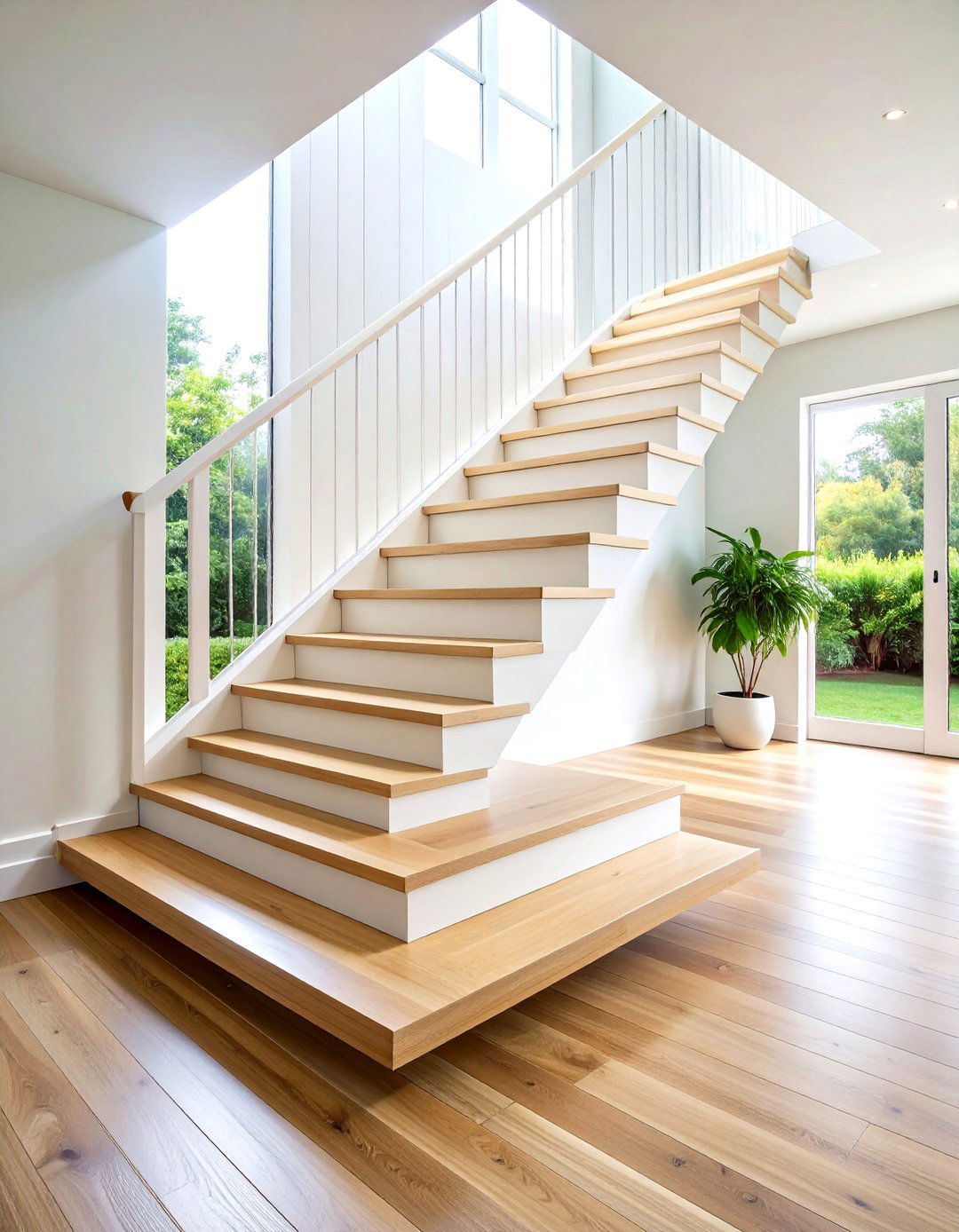
Floating white oak staircases create an illusion of suspended steps that defies gravity with striking contemporary appeal. This design utilizes hidden structural supports within the wall, allowing thick white oak treads to appear as if they're magically hovering in space. The minimalist approach eliminates traditional risers and visible support structures, creating an open, airy feel that maximizes natural light flow throughout the space. These staircases typically feature 2-3 inch thick white oak treads that showcase the wood's beautiful grain patterns while providing substantial durability. The floating effect works particularly well in modern homes with open floor plans, where the staircase becomes a sculptural element rather than merely functional architecture. Professional engineering ensures safety while maintaining the clean, uninterrupted aesthetic that makes floating staircases so visually compelling.
2. Curved White Oak Staircase with Sweeping Lines
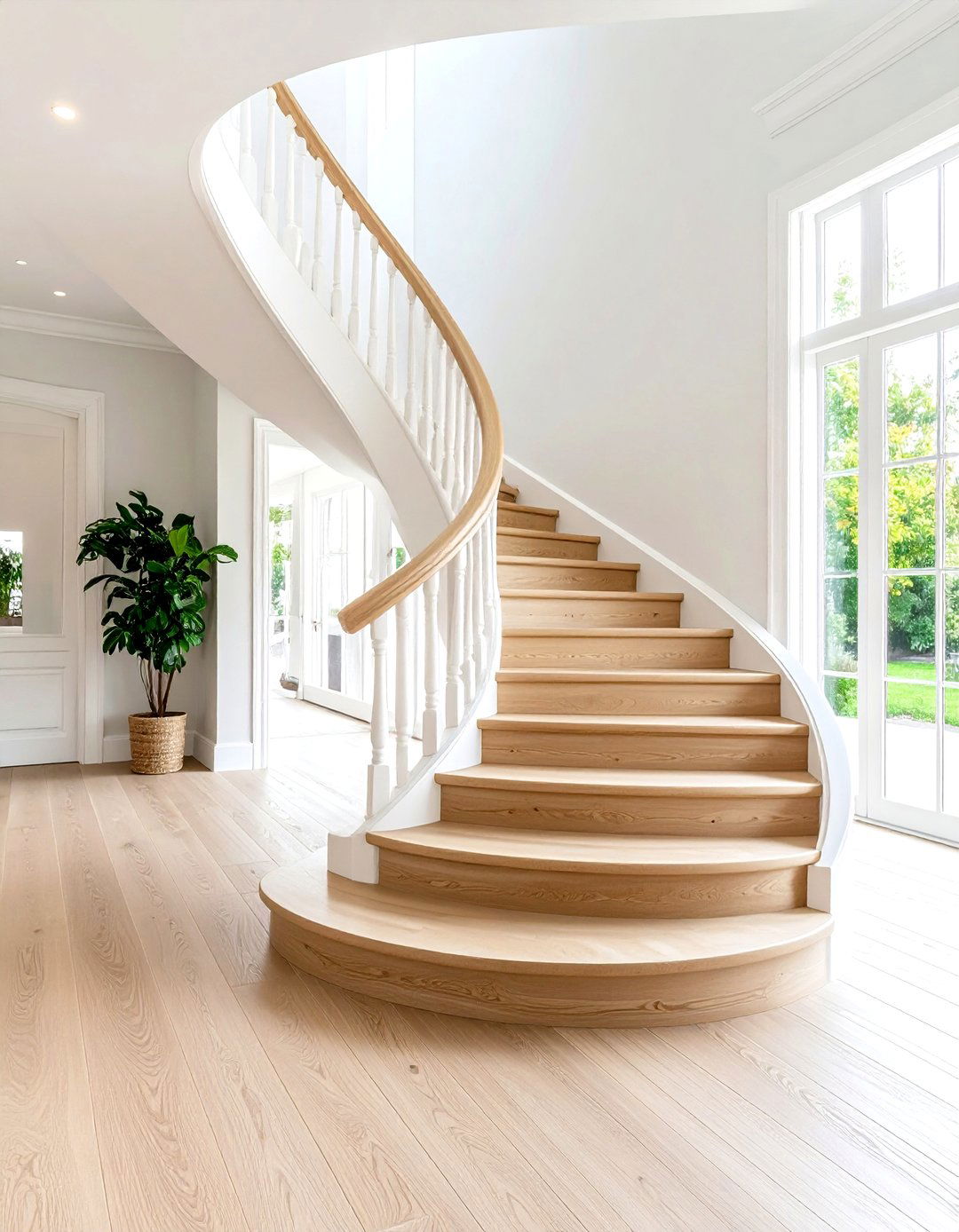
Curved white oak staircases captivate with graceful arcs and fluid lines that provide visual rhythm, transforming functional stairs into artistic masterpieces. The organic curvature creates beautiful contrast against the inherent strength of white oak, achieving perfect balance between movement and stability. This design requires expert craftsmanship to bend and shape the oak components while maintaining structural integrity throughout the curve. The sweeping motion guides users naturally from one level to another, creating an ergonomic climbing experience that feels effortless. Custom curved staircases often incorporate varying tread widths to accommodate the changing radius, ensuring comfortable foot placement at every step. The continuous grain flow of white oak enhances the curved design, creating seamless visual continuity that emphasizes the staircase's flowing geometry. Installation requires precise measurements and skilled joinery to achieve the perfect curvature.
3. Spiral White Oak Staircase for Compact Spaces
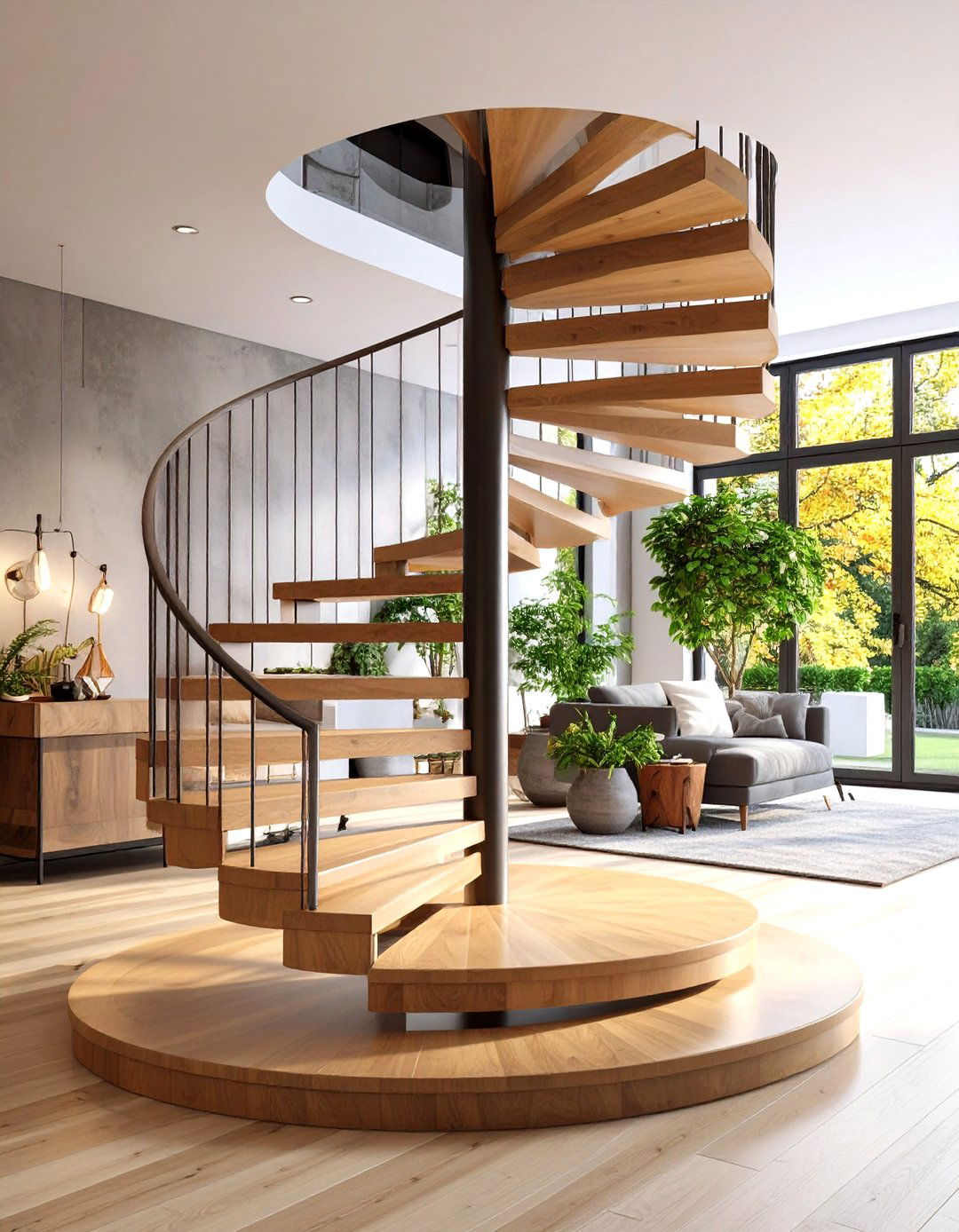
Spiral staircases save square footage with their compact design while remaining sturdy, safe, and stylish, making them perfect for challenging spaces. White oak spiral designs combine space efficiency with natural beauty, featuring pie-shaped treads that radiate from a central support column. The warm tones and distinctive grain patterns of white oak soften the potentially industrial appearance of spiral configurations. Custom white oak spiral staircases help create space while providing elegant vertical circulation that doesn't occupy the same footprint as traditional straight stairs. These designs work exceptionally well in lofts, compact apartments, or as secondary staircases providing access to upper levels. The helical structure creates interesting visual dynamics, with the white oak treads appearing to dance around the central pole. Professional installation ensures proper pitch and comfortable climbing angles while maintaining building code compliance for residential safety standards.
4. Open Tread White Oak Staircase with Transparent Design
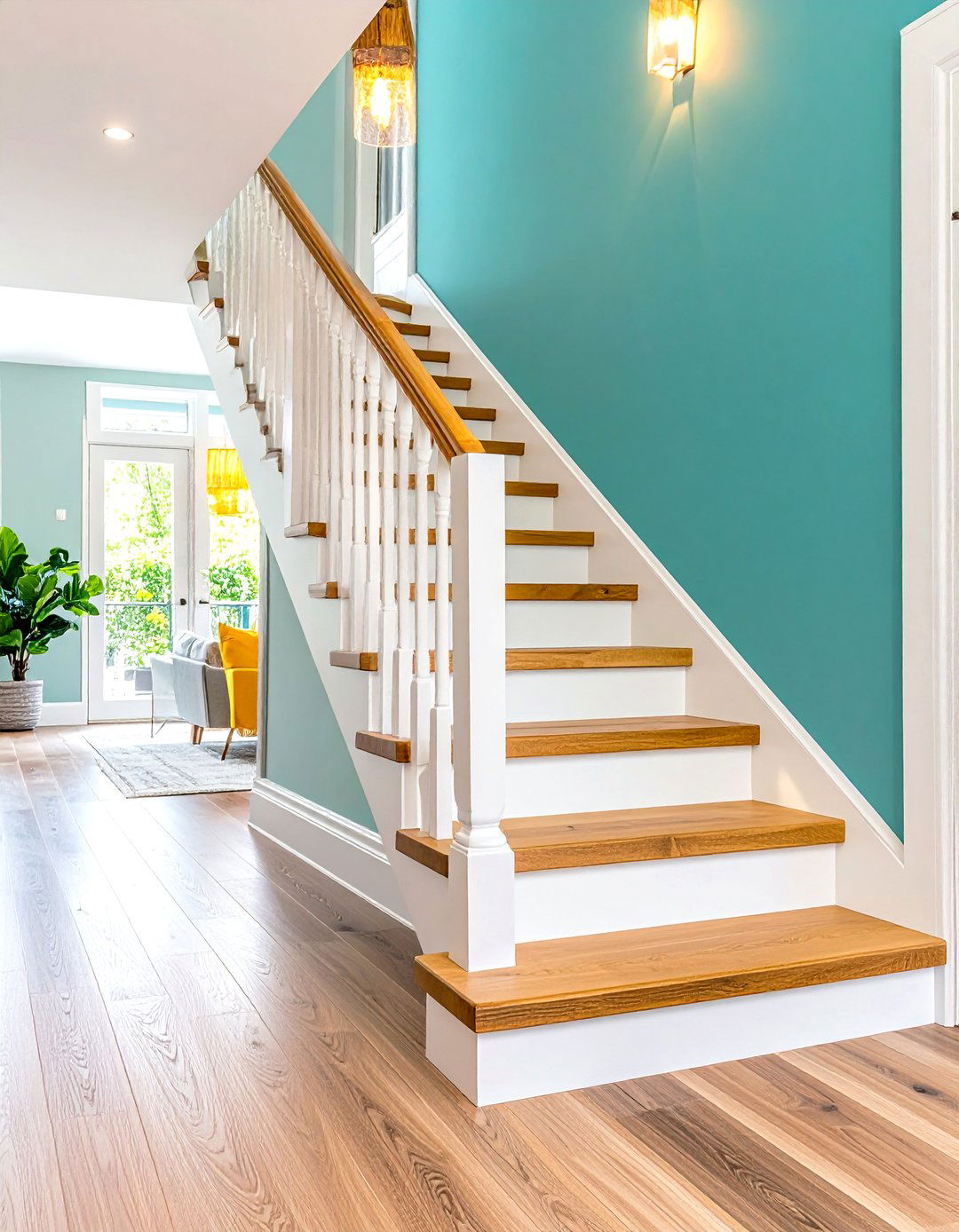
Open tread staircases are becoming increasingly popular for their sleek design and ability to transform interiors by enhancing space perception while adding contemporary aesthetics. This design eliminates traditional risers, creating gaps between white oak treads that allow light to filter through the entire staircase structure. The transparent quality prevents the staircase from visually dividing spaces, maintaining openness in modern floor plans. Open tread designs typically feature thick 100mm solid oak treads that provide substantial stepping surfaces while showcasing the wood's natural beauty. The absence of risers requires careful engineering to ensure adequate structural support through robust stringers or central support systems. This approach works particularly well with minimalist interior design schemes where clean lines and unobstructed sightlines are priorities. The white oak treads appear to float individually, creating dramatic shadow patterns that change throughout the day as natural light moves through the space.
5. White Oak Staircase with Glass Balustrade Railings
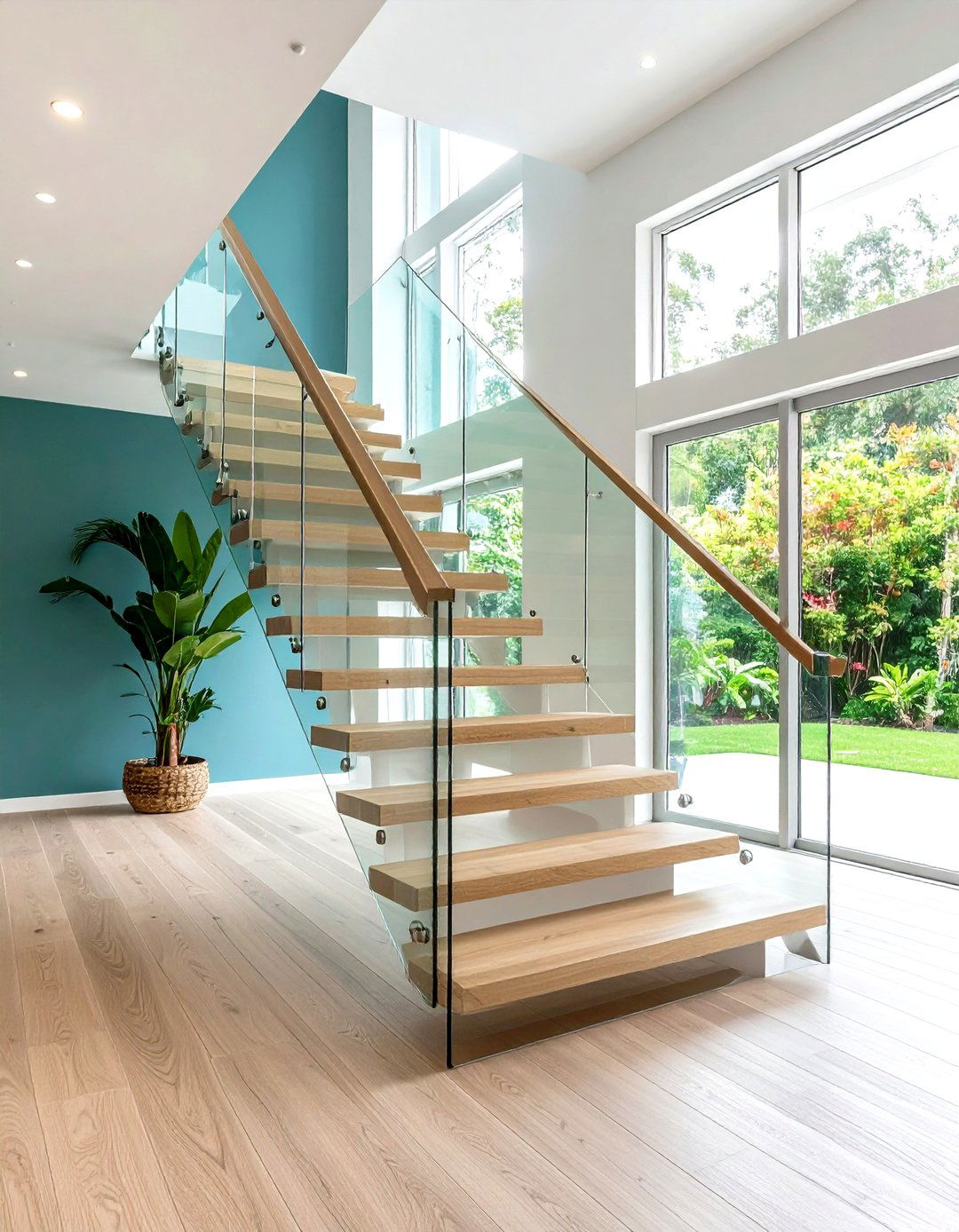
Glass balustrade staircases create open and airy atmospheres, making spaces feel brighter and more expansive while combining modern elegance with functional design. Pairing white oak treads with transparent glass railings maximizes visual openness while providing necessary safety barriers. The combination of solid oak construction with 10mm toughened glass balustrading creates stunning contemporary appeal. Glass panels can be frameless for ultimate minimalism or incorporated into sleek metal frames for additional visual structure. The transparency allows the natural beauty of white oak to remain the focal point while meeting building code requirements for railing height and safety. This combination works exceptionally well in homes with scenic views, as the glass doesn't obstruct sightlines. Professional installation ensures proper tempered glass specifications and secure mounting systems. The contrast between organic wood and manufactured glass creates sophisticated material juxtaposition that defines modern architectural aesthetics.
6. White Oak Staircase with Stainless Steel Cable Railings

Cable railings offer unobstructed views and minimal maintenance while providing sleek, modern aesthetics that complement contemporary white oak staircase designs. The horizontal stainless steel cables create clean geometric lines that contrast beautifully with white oak's organic grain patterns. Cable railing systems use thin stainless steel cables that provide nearly invisible barriers, maximizing visibility while maintaining safety. This combination achieves industrial-chic aesthetics while preserving the warmth of natural wood elements. Cable systems typically feature marine-grade stainless steel for maximum durability and corrosion resistance. The installation requires precise tensioning to ensure proper spacing and structural integrity. White oak posts can incorporate integrated cable tensioning systems for seamless appearance. The minimal visual impact of cables allows the staircase's architectural form to remain prominent while providing necessary fall protection. This design approach works equally well for interior and covered exterior applications.
7. White Oak Staircase with Black Metal Railings

The combination of white oak treads with black metal railings creates striking visual contrast that defines contemporary staircase design. This pairing achieves sophisticated color balance while highlighting both materials' unique characteristics. Black powder-coated steel or wrought iron provides geometric structure that complements white oak's natural organic patterns. Custom iron balusters and newels combined with stained white oak create stylish contemporary accents that enhance modern home aesthetics. The dark metal framework emphasizes the light wood tones while providing sleek, architectural definition. Various metal profiles are available, from simple rectangular bars to more complex geometric patterns. The contrast creates dramatic visual impact while maintaining functional safety requirements. Professional powder coating ensures long-lasting finish durability and easy maintenance. This combination works particularly well in transitional design schemes that bridge traditional and contemporary styles, offering timeless appeal with modern sensibility.
8. White Oak Staircase with Traditional Wood Handrails
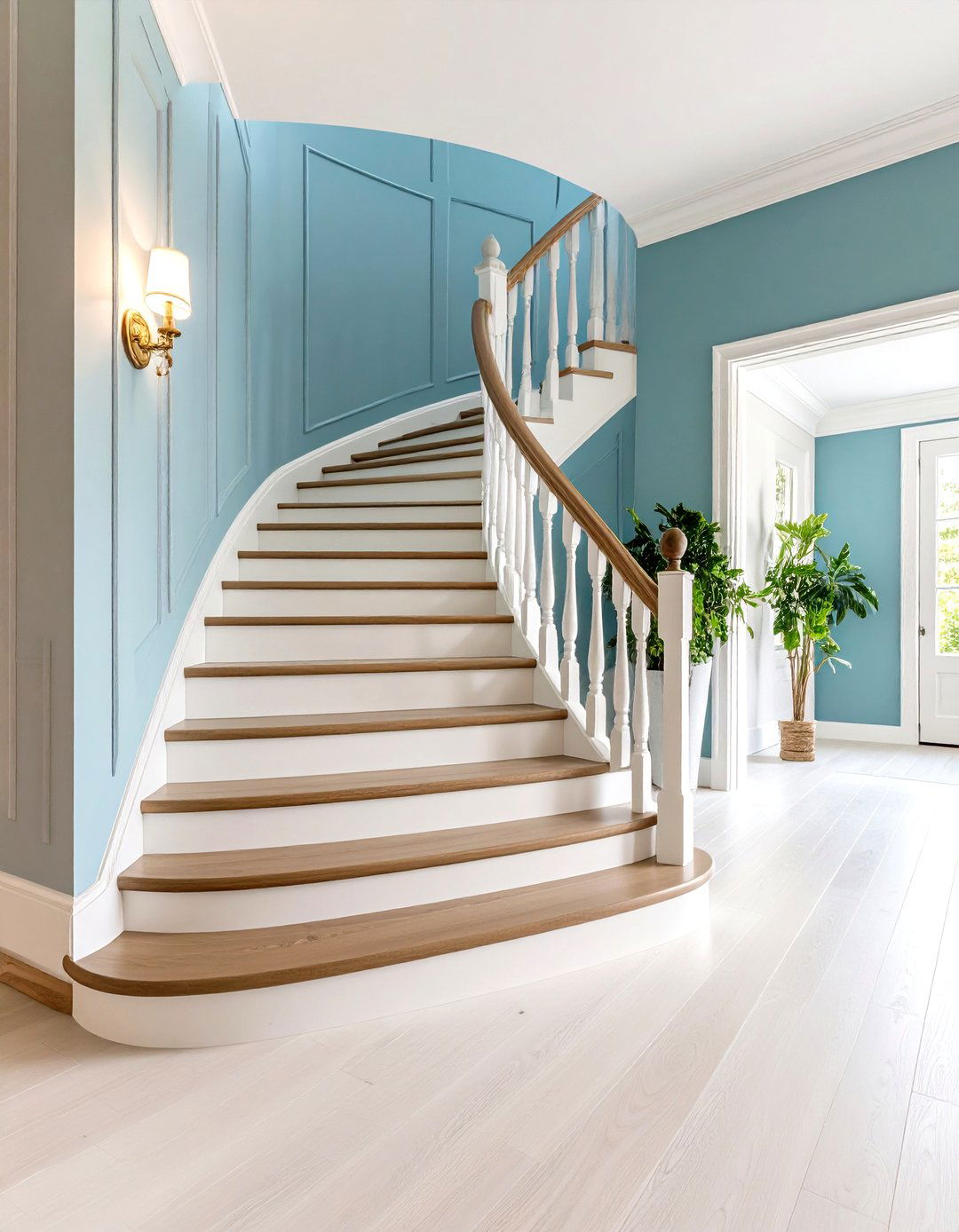
Traditional white oak handrails made from solid hardwood provide premium quality construction that complements white oak staircase treads for cohesive design unity. This approach creates seamless material consistency throughout the entire staircase system. Custom white oak handrails can be shaped to various profiles, from simple square designs to more elaborate traditional moldings. Modern white oak handrail profiles provide clean, contemporary aesthetics while maintaining the warmth and natural beauty of solid wood construction. The continuous wood grain creates visual flow that guides users naturally along the staircase path. Traditional joinery techniques ensure strong, durable connections that will withstand decades of daily use. Various finishing options allow customization to match existing woodwork or create desired color coordination. Professional installation includes proper mounting hardware and adherence to building codes for handrail height and grip requirements. The tactile quality of white oak provides comfortable, secure grip while contributing to the overall aesthetic appeal.
9. Minimalist White Oak Staircase with Clean Lines
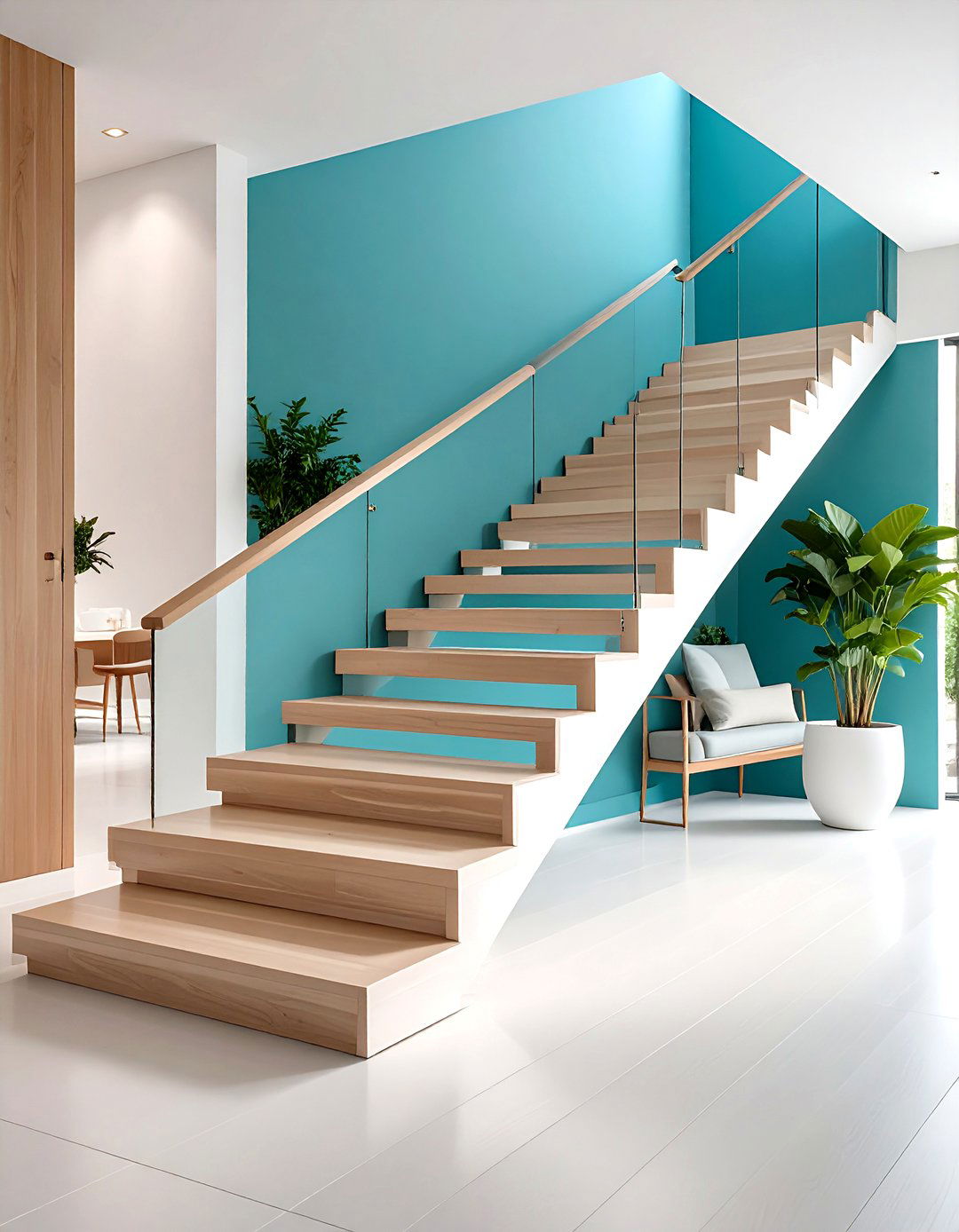
Minimalist staircases with clean lines and open treads create seamless integration with contemporary home design while maximizing visual space. This approach eliminates decorative elements in favor of pure geometric forms that showcase white oak's natural beauty. Minimalism reigns supreme in 2025 staircase design, emphasizing sleek, understated elegance with clean lines and durable materials. Hidden fasteners and precise joinery maintain uninterrupted surfaces throughout the staircase structure. The design relies on perfect proportions and expert craftsmanship rather than ornamental details for visual impact. Integrated lighting systems can be concealed within the structure to enhance the minimalist aesthetic while providing functional illumination. Simple, geometric handrail profiles complement the overall design philosophy without adding visual complexity. This approach requires premium-grade white oak with consistent grain patterns to achieve the desired sophisticated appearance. Professional installation ensures perfect alignment and smooth transitions between all components.
10. Industrial White Oak Staircase with Exposed Steel Elements
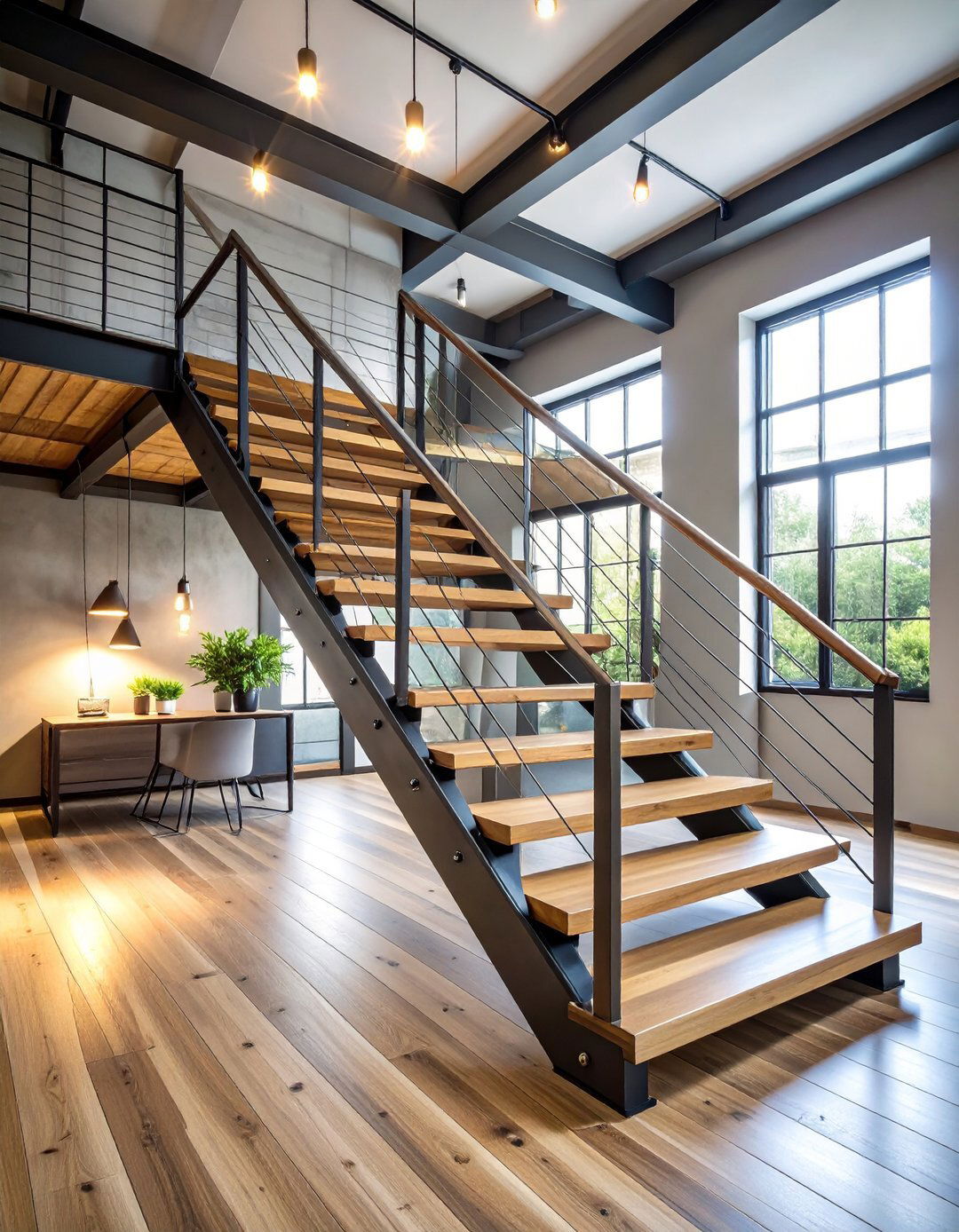
The juxtaposition between warming oak treads and sleek steel creates bold, graphic looks with unique industrial edge that enhances contemporary design. This design philosophy celebrates the contrast between natural and manufactured materials. Exposed steel stringers, brackets, and support elements provide honest structural expression while white oak treads add warmth and comfort. Open white oak staircases with iron elements create contemporary accents that add perfect modern statements to residential spaces. The industrial aesthetic emphasizes function over decoration, showcasing construction methods as design features. Raw steel elements can be left with natural patina or treated with protective coatings for consistent appearance. The combination creates dynamic visual tension that energizes interior spaces. Professional welding and engineering ensure structural integrity while maintaining the desired industrial appearance. This approach works particularly well in converted lofts, modern farmhouses, or contemporary homes seeking authentic material expression.
11. White Oak Staircase with Integrated LED Lighting Systems

LED strip lighting installed under white oak treads creates beautiful floating effects while providing functional safety illumination for nighttime navigation. Integrated lighting transforms staircases into dramatic architectural features that operate safely around the clock. LED strip lighting inset into oak treads provides contemporary appeal while ensuring safe passage in low-light conditions. Concealed LED channels can be routed into tread undersides or riser faces to achieve different lighting effects. Smart dimming systems allow customization of brightness levels for various times and occasions. Color temperature selection ranges from warm white for cozy ambiance to cool white for task-oriented illumination. Professional electrical integration ensures code compliance and safe operation. The warm light enhances white oak's natural grain patterns while creating sophisticated ambiance. Motion sensors can automate lighting activation for energy efficiency and convenience. This technology integration adds contemporary functionality while preserving the staircase's aesthetic appeal.
12. White Oak Staircase with Contrasting Dark Risers
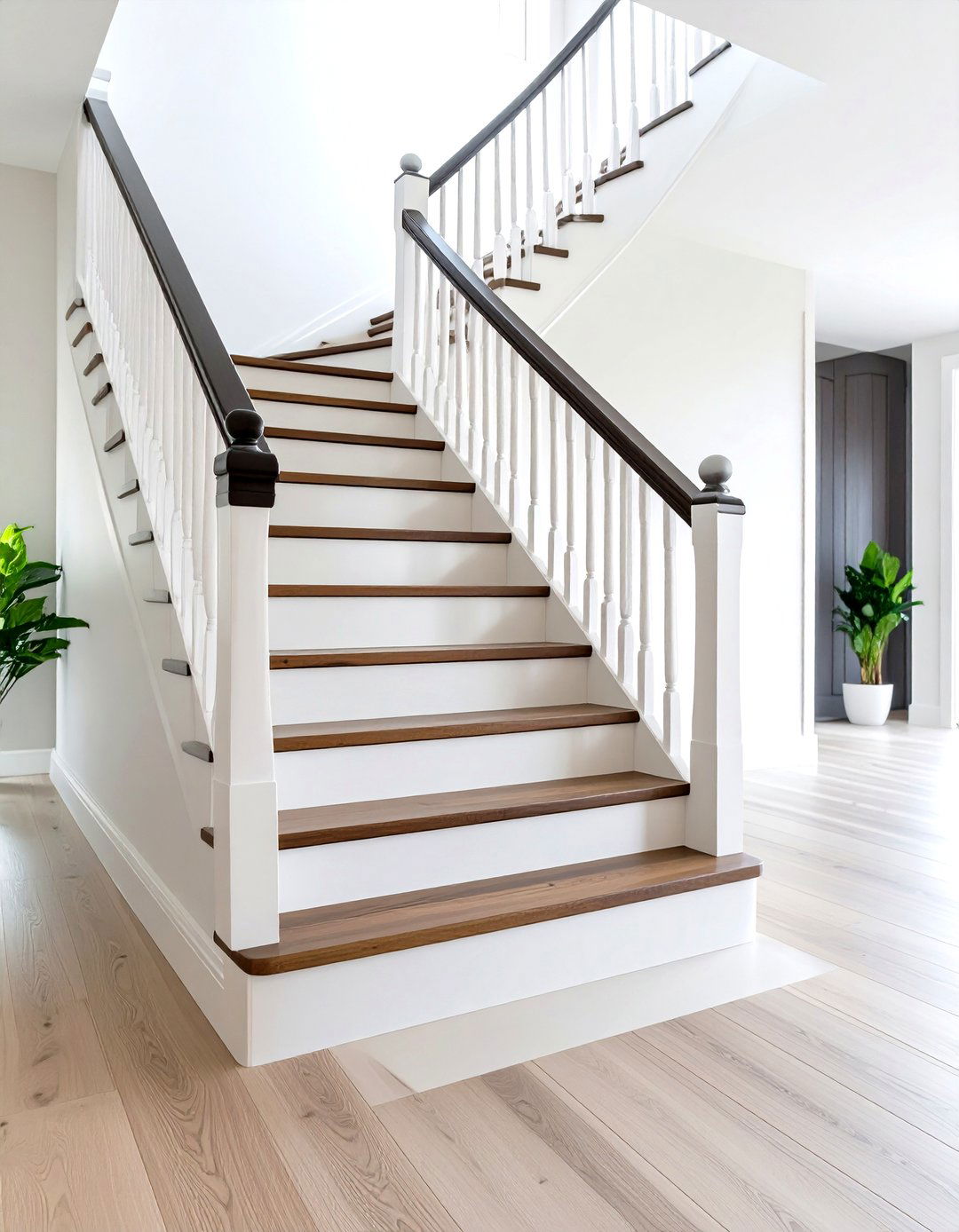
Incorporating contrasting elements such as dark risers or metal accents complements white oak's light natural hues while creating visual intrigue and depth. This design approach uses color contrast to define individual steps while maintaining white oak's prominence. Dark-stained wood, painted surfaces, or alternative materials can provide riser contrast. The two-tone effect creates rhythm and visual interest while highlighting the staircase's geometric structure. Color palettes featuring charcoal posts and risers combined with natural oak treads create sophisticated contemporary appeal. Various dark materials can be selected, from ebony-stained wood to matte black metal panels. The contrast helps define step edges for safety while adding sophisticated design dimension. Professional finishing ensures durable, consistent color that complements the white oak's natural variations. This approach allows personalization while maintaining the warmth and beauty that makes white oak staircases so appealing to homeowners seeking distinctive architectural features.
13. Traditional White Oak Staircase with Carved Baluster Details
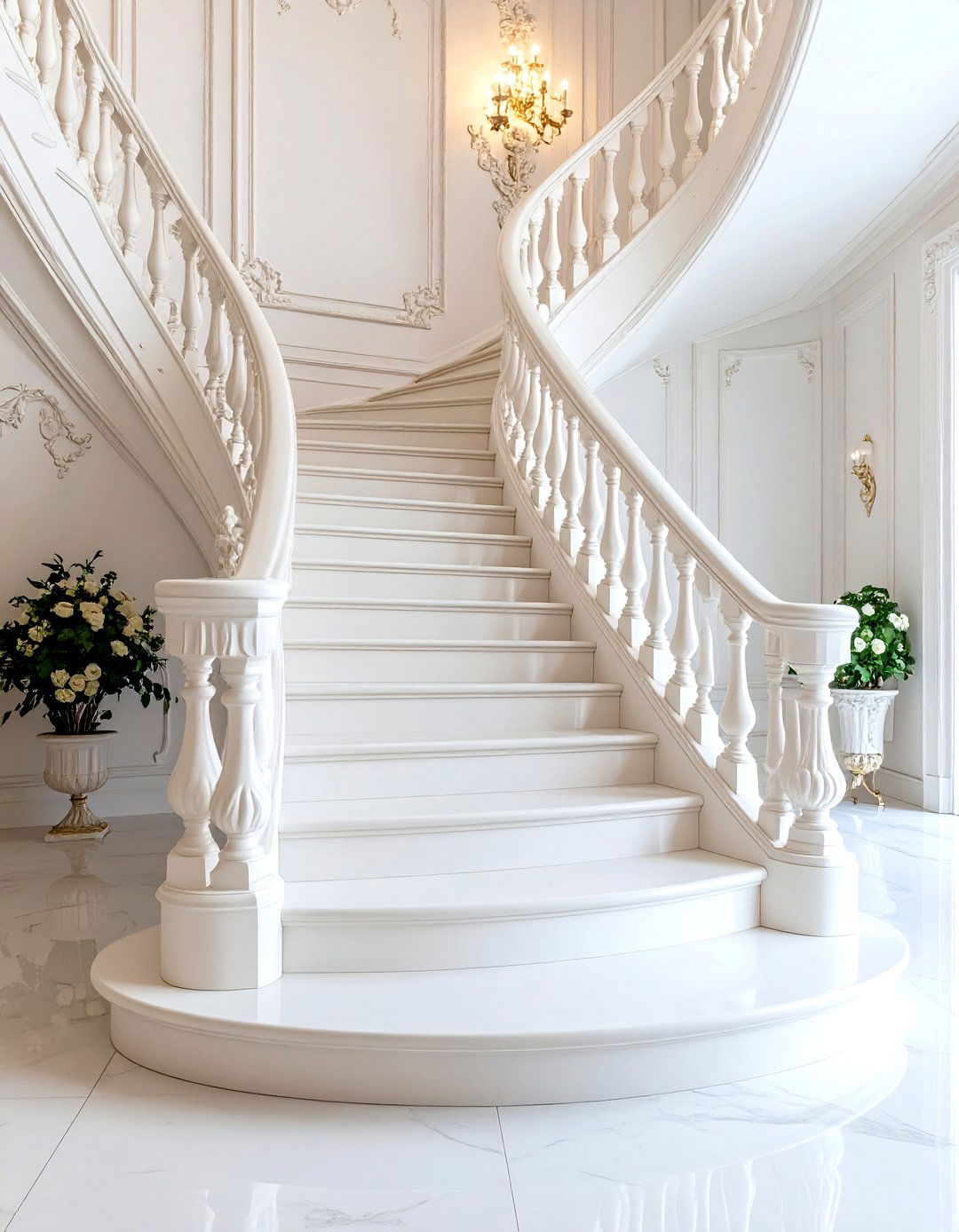
Artisan white oak staircases showcase handcrafted details that celebrate individuality through meticulously carved railings and custom finishing techniques. This approach emphasizes traditional craftsmanship while utilizing white oak's excellent machining properties. Custom carved balusters can incorporate various traditional motifs, from simple turned profiles to elaborate decorative patterns. Traditional designs focus on detailed millwork including carved elements that highlight natural wood textures and unique grain patterns. Skilled artisans can create one-of-a-kind elements that reflect personal style preferences and architectural context. The carving process showcases white oak's workability and beautiful grain structure. Hand-finishing techniques enhance the carved details while protecting the wood for long-term durability. Traditional joinery methods ensure strong connections that honor time-tested construction principles. This approach creates heirloom-quality staircases that can be appreciated for generations. Professional craftsmanship ensures that decorative elements complement rather than overwhelm the overall design composition.
14. White Oak Staircase with Ornate Newel Posts
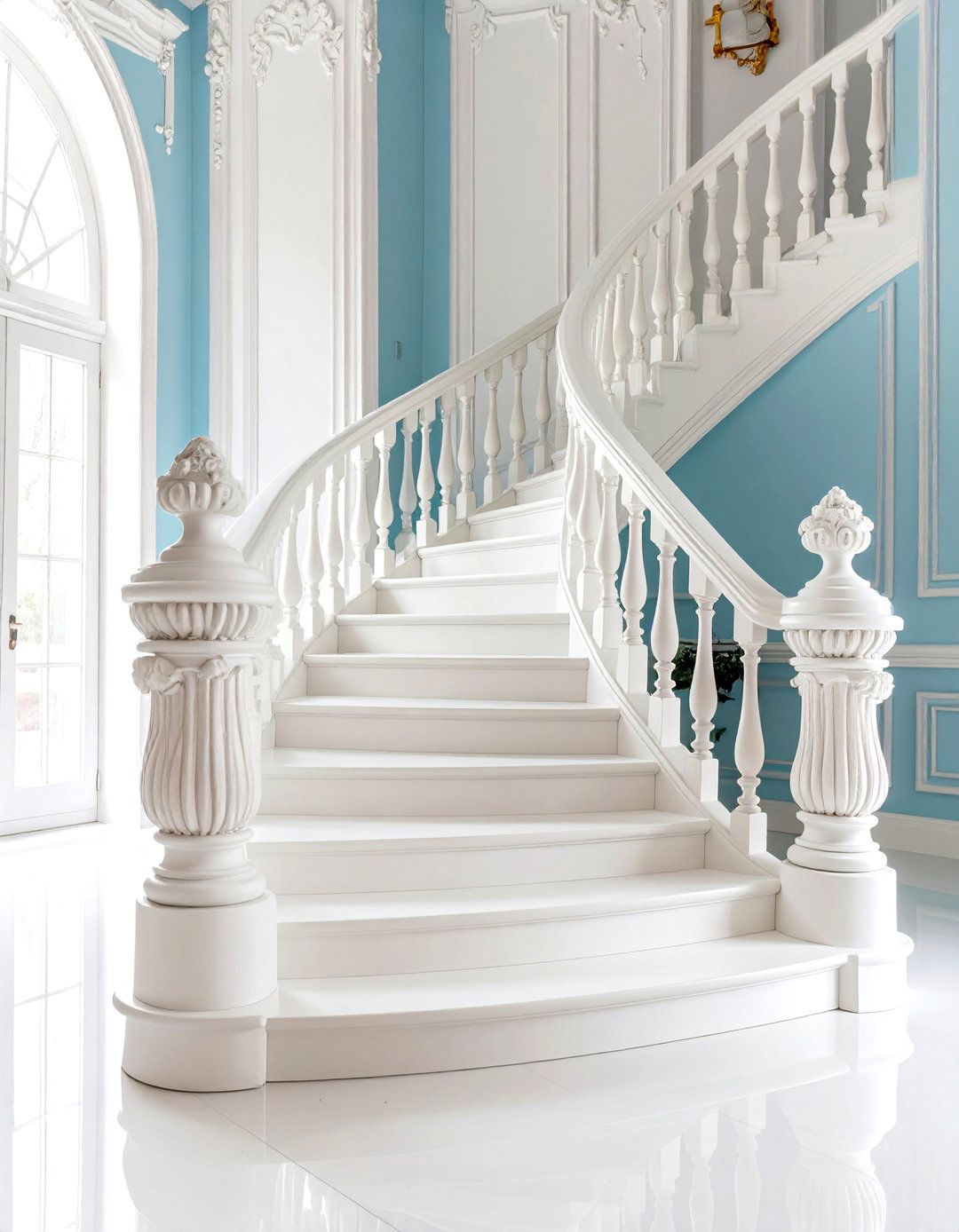
Ornate white oak newel posts serve as dramatic focal points that anchor traditional staircase designs with substantial architectural presence. These substantial corner posts can incorporate intricate turning, carving, or geometric detailing that showcases white oak's excellent workability. Custom stair components including ornate newel posts can be manufactured with various design options that enhance both safety and aesthetic appeal. Traditional newel post designs range from simple turned profiles to elaborate carved compositions featuring decorative caps and panels. The posts provide structural anchoring for handrail systems while creating visual punctuation at key transition points. Professional turning and carving highlight white oak's grain patterns while creating substantial architectural elements. Various finishing options enhance the wood's natural beauty while providing long-term protection. The ornate details require skilled craftsmanship to achieve proper proportions and refined execution. These substantial posts work particularly well in traditional and transitional design schemes where architectural detail is valued. Custom sizing ensures proper scale relationships with the overall staircase proportions.
15. Classic Straight White Oak Staircase with Consistent Design

Classic straight white oak staircases provide timeless appeal through consistent design elements and traditional proportions that complement various architectural styles. This approach emphasizes symmetry, proper scale, and refined details that create enduring aesthetic value. White oak stair treads come in various styles and finishes, providing clean, cohesive appearance that adds sophistication to traditional and modern interiors. Consistent tread dimensions, uniform riser heights, and properly proportioned handrails create comfortable climbing experiences. Traditional newel posts, balusters, and handrail profiles work together to achieve harmonious design unity. Professional installation ensures proper building code compliance while maintaining aesthetic consistency. White oak's straight grain and medium coarse texture provide excellent finishing characteristics that enhance traditional staircase applications. Quality construction techniques ensure long-term durability and structural integrity. This classic approach provides flexible design foundation that accommodates various decorative finishing options while maintaining fundamental design principles that have proven successful throughout architectural history.
16. White Oak Staircase with Built-in Under-Stair Storage
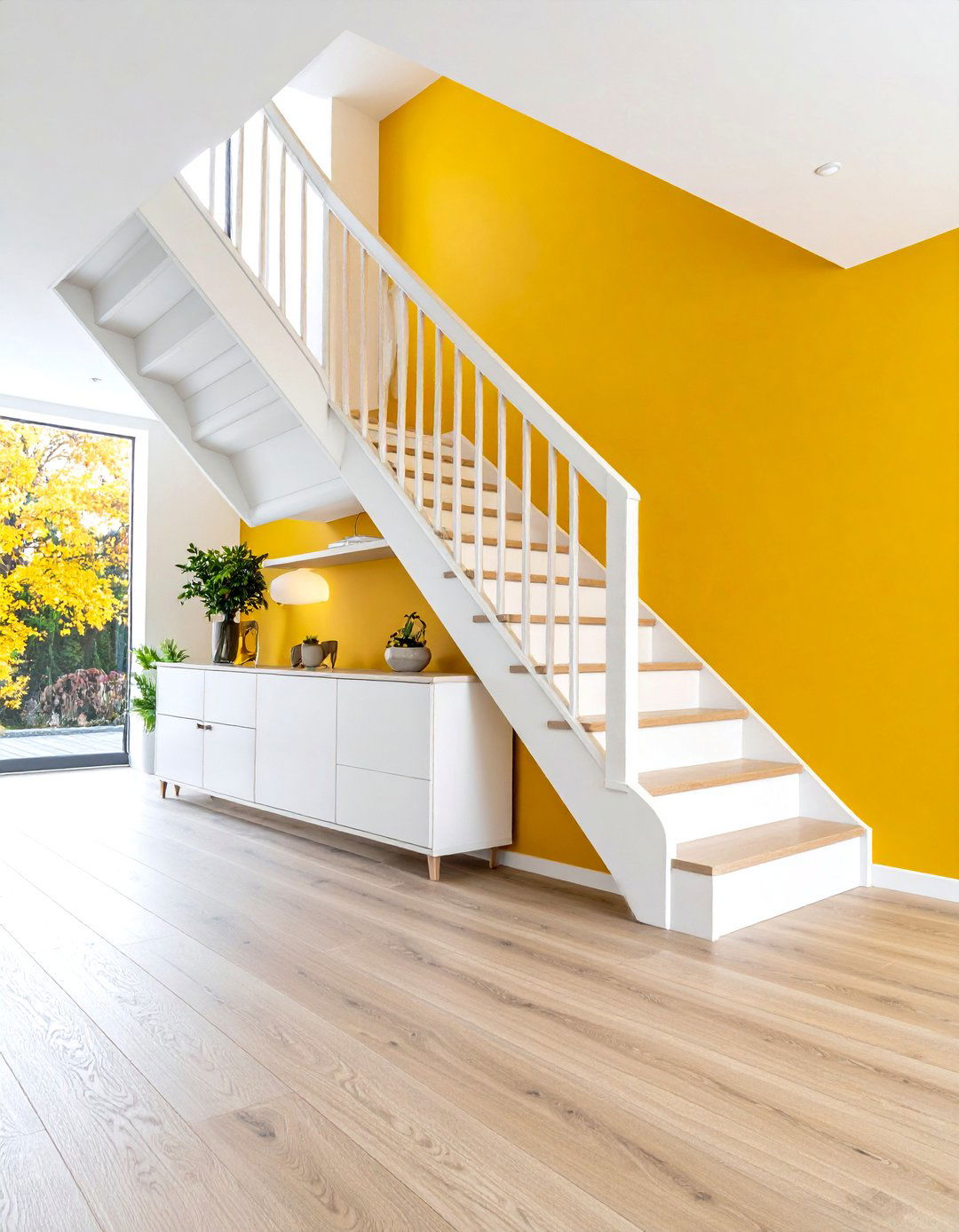
Under-stair areas can be transformed into functional storage solutions that maximize home efficiency while maintaining aesthetic appeal. Custom white oak storage systems utilize the triangular space beneath staircases for practical organization without compromising visual appeal. Built-in cabinetry can incorporate the same white oak materials as the staircase for seamless design integration. Various storage configurations accommodate different needs, from closed cabinets to open shelving systems. Underside spaces are being opened up, clad in timber, or turned into design moments with custom shelving and architectural detailing. Professional design ensures proper access while maintaining structural integrity of the staircase above. Integrated lighting can highlight stored items while contributing to overall ambient illumination. Custom hardware and finishing details coordinate with the staircase design for cohesive appearance. This approach maximizes functional utility while creating architectural interest in areas that are often overlooked or underutilized in residential design.
17. White Oak Staircase with Recessed Tread Lighting
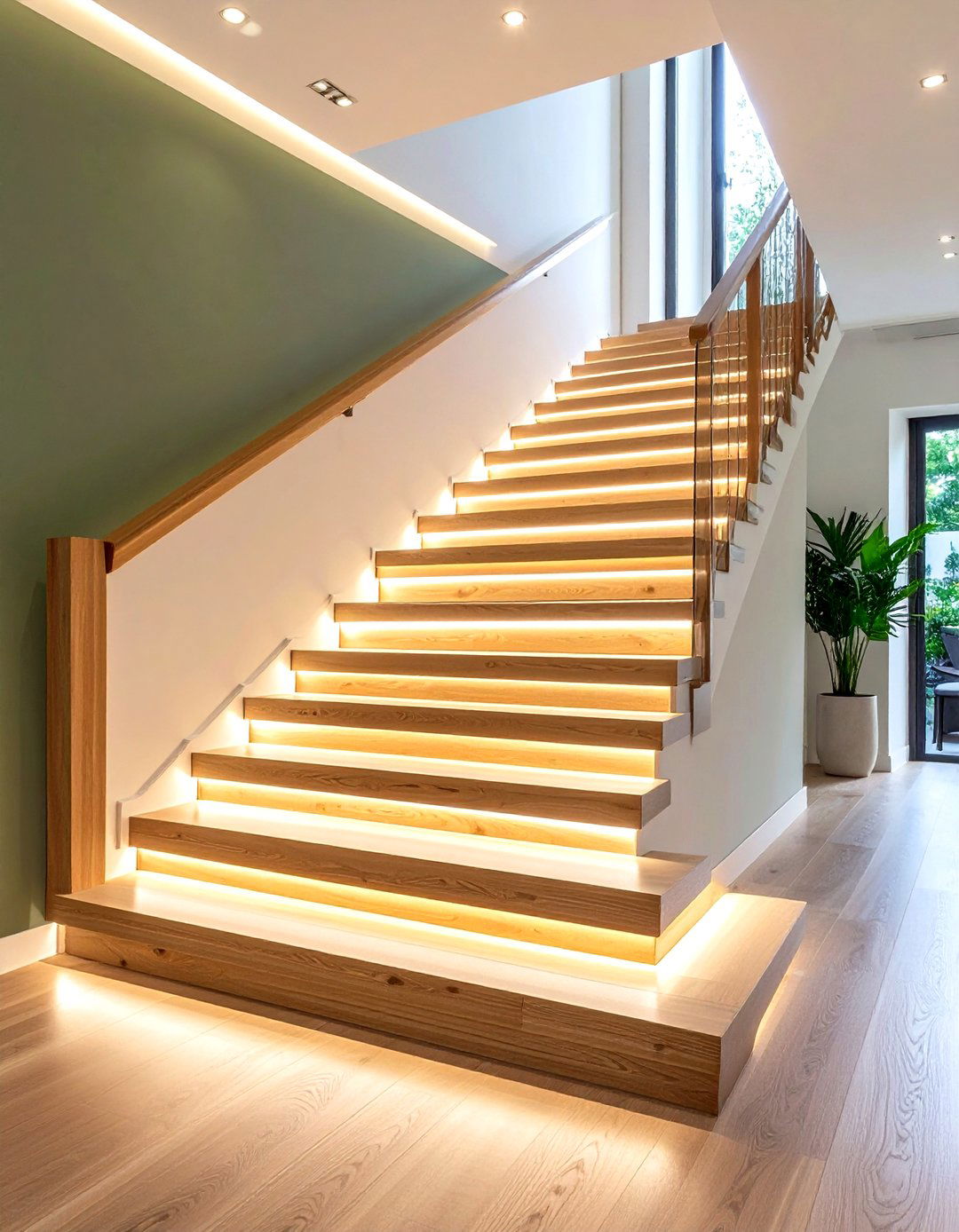
Recessed LED lighting installed directly into white oak treads provides subtle illumination that enhances safety while creating sophisticated ambiance. This lighting approach integrates seamlessly into the staircase structure without adding external fixtures. Recessed stair lights embedded into the stair treads offer sleek, flush finishes that provide adequate illumination while minimizing tripping hazards. Professional routing creates precise channels for LED strips or individual fixtures within the tread material. The lighting can be positioned along tread edges or within the tread surface for different effects. Dimming controls allow customization for various lighting scenarios and energy conservation. Waterproof LED components ensure long-term reliability in residential applications. The recessed installation protects lighting elements from damage while maintaining clean design lines. Professional electrical work ensures code compliance and safe operation. This approach creates stunning visual effects that transform ordinary staircases into architectural features that operate beautifully day and night while providing practical safety benefits.
18. White Oak Staircase with Custom Stain and Finish Options
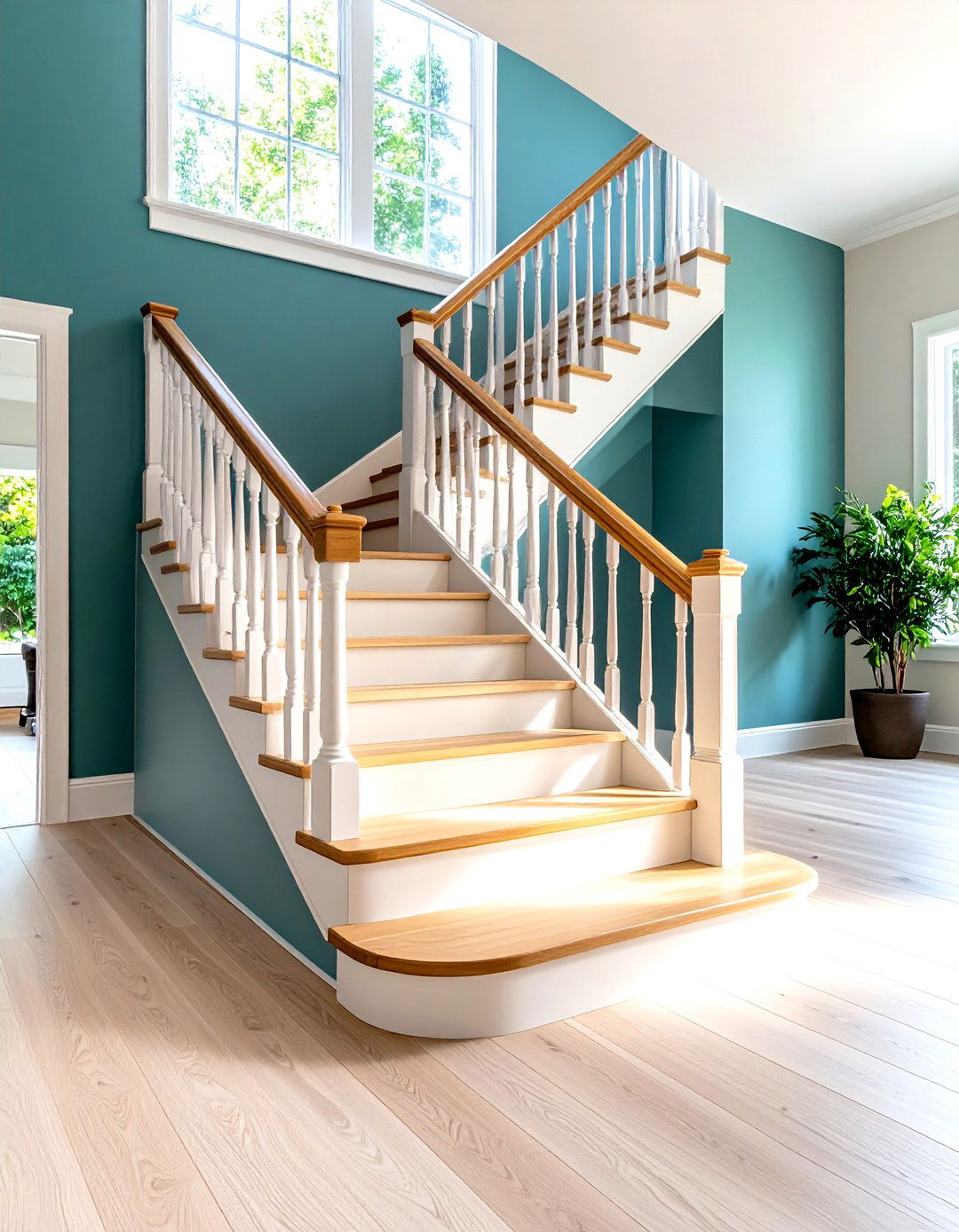
Custom staining and finishing allow white oak staircases to achieve specific color coordination while highlighting the wood's natural grain patterns. Professional finishing services can match existing woodwork or create entirely new color schemes. Various texture options including wire brushing enhance white oak's open grain structure while custom stain matching ensures perfect color coordination. Multiple stain layers can create complex color depth that showcases the wood's natural variations. Unfinished white oak provides flexibility for custom staining and finishing that allows matching existing décor or achieving unique personalized appearances. Professional application ensures even coverage and durable protection against daily wear. Various sheen levels from matte to high gloss provide different aesthetic effects while offering appropriate protection. Color samples and testing ensure satisfactory results before full application. Advanced finishing techniques can create aged, distressed, or contemporary appearances depending on design goals. This customization capability makes white oak staircases adaptable to virtually any interior design scheme while maintaining the wood's inherent beauty and structural performance.
19. White Oak Staircase with Mixed Material Accents
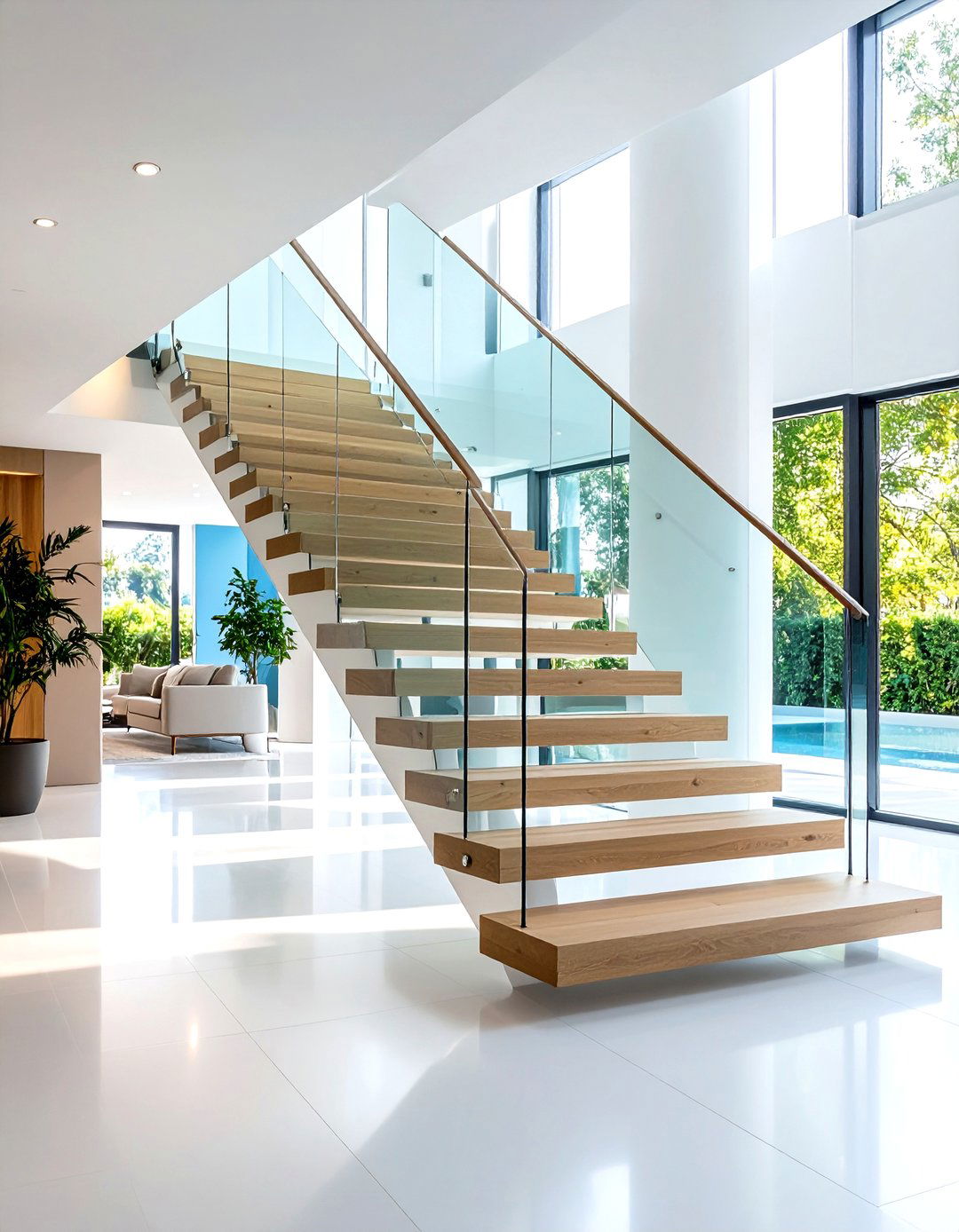
Incorporating mixed materials such as metal, glass, or stone creates dynamic visual contrast while highlighting white oak's natural warmth and organic beauty. This design approach celebrates material diversity while maintaining white oak as the primary structural element. Metal accents can include steel stringers, aluminum railings, or bronze hardware details. Glass elements might incorporate panels, shelving, or decorative inserts that enhance light transmission. Stone applications could feature accent walls, integrated planters, or decorative inlays. Combining natural wood with sleek steel creates bold graphic looks that enhance contemporary architectural aesthetics. Professional design ensures proper material compatibility and structural integration. Each material contributes unique properties while working together to create cohesive design narratives. The mixed material approach allows personalization while showcasing white oak's versatility as a primary staircase material. Careful selection ensures long-term durability and maintenance compatibility between different material systems used throughout the staircase construction.
20. White Oak Staircase with Smart Home Integration Features
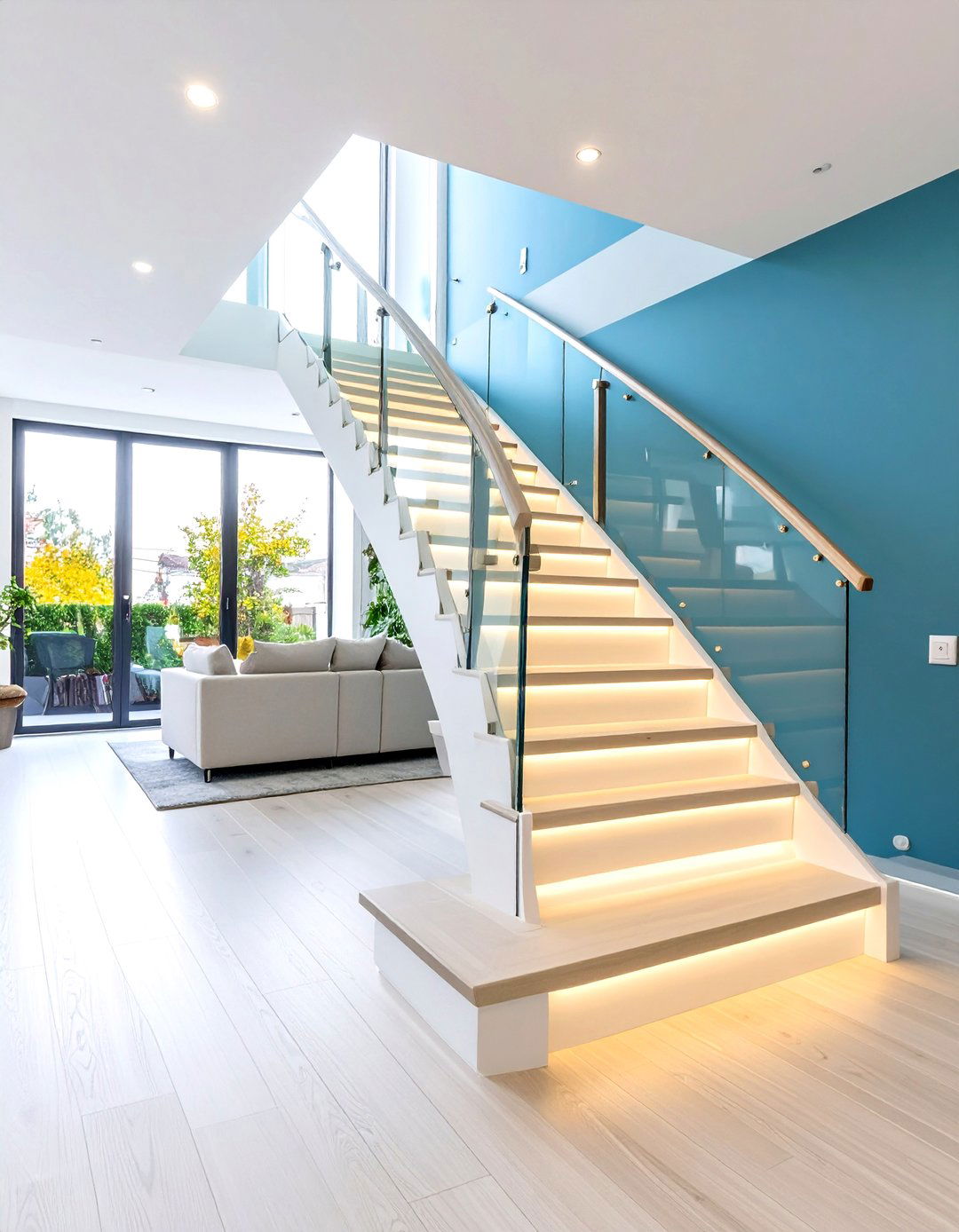
Modern white oak staircases can incorporate smart technology features that enhance convenience, safety, and energy efficiency through automated systems. Smart home integration allows control over lighting levels, colors, and timing through mobile applications or voice commands. Motion sensors can automatically activate staircase lighting when users approach, providing safety benefits while conserving energy. Programmable lighting scenes can adjust throughout the day to match natural circadian rhythms or specific activities. Integrated smart lighting systems provide trend-led features that enhance both functionality and aesthetic appeal. Voice control systems allow hands-free operation when carrying items up or down stairs. Smart thermostats can integrate with staircase areas to optimize heating and cooling efficiency throughout multi-level homes. Security integration can include discreet sensors that monitor staircase usage patterns. Professional installation ensures proper integration with existing smart home ecosystems while maintaining the white oak staircase's aesthetic integrity. These advanced features add contemporary functionality while preserving the timeless appeal of natural wood construction.
Conclusion:
White oak staircases represent the perfect fusion of natural beauty, structural integrity, and contemporary design innovation for 2025 home improvement projects. From minimalist floating designs to traditional carved details, these twenty ideas demonstrate white oak's remarkable versatility in creating stunning architectural features. Whether incorporating smart technology, dramatic lighting, or mixed materials, white oak provides the ideal foundation for both functional circulation and artistic expression. The wood's exceptional durability, workability, and finishing characteristics ensure long-lasting performance while maintaining aesthetic appeal throughout decades of daily use. Professional installation and quality craftsmanship maximize these benefits while ensuring safety code compliance and structural integrity for residential applications.


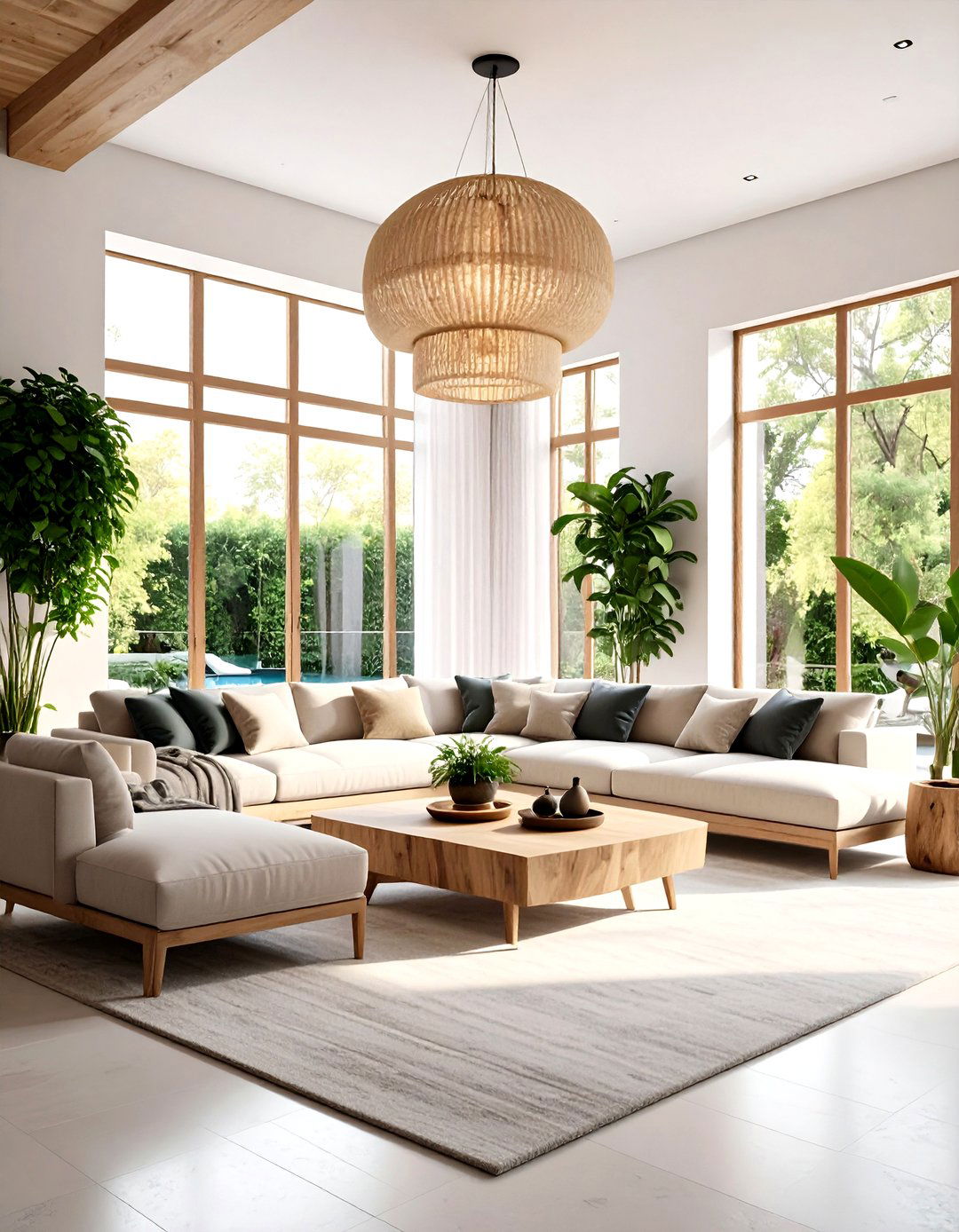
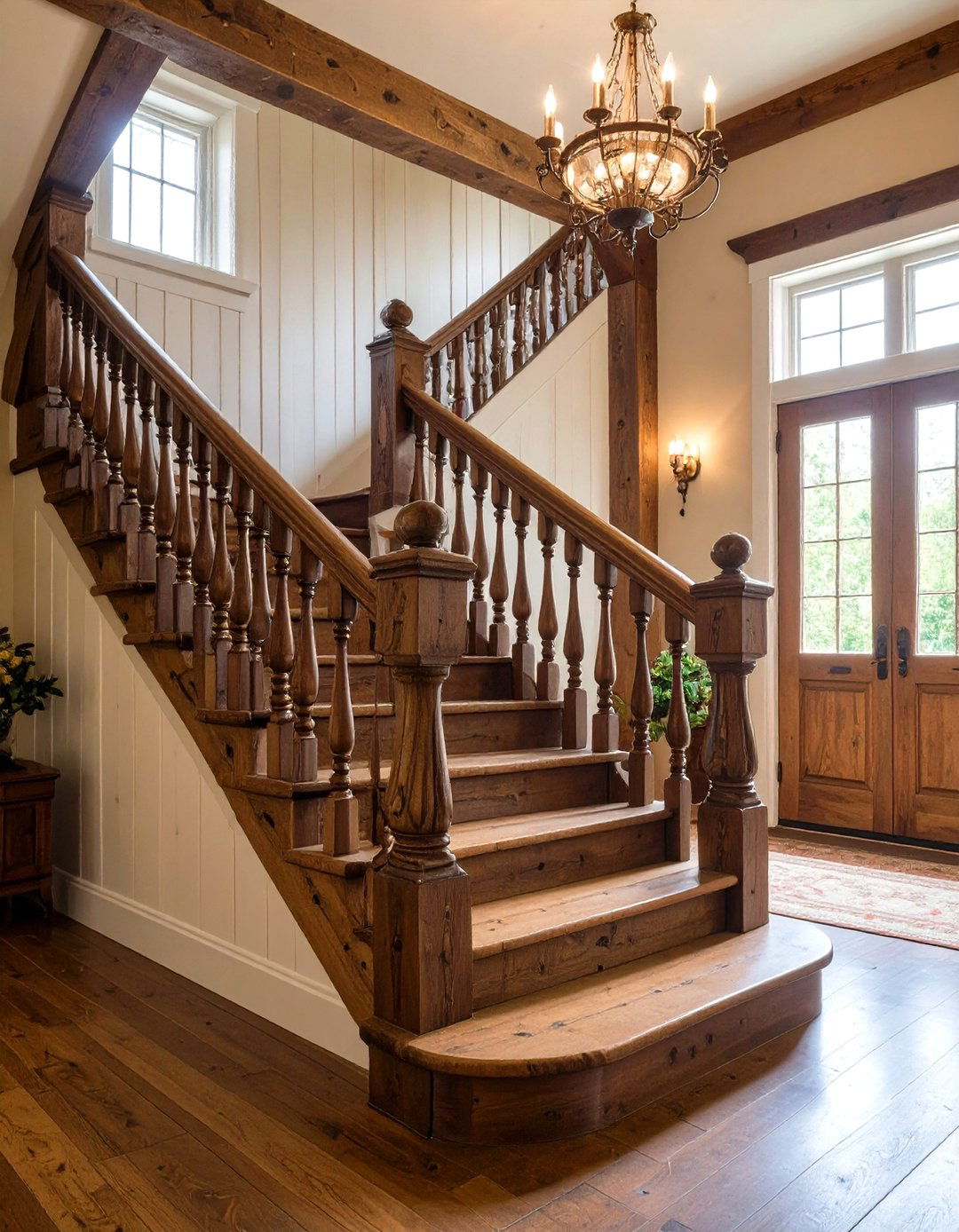
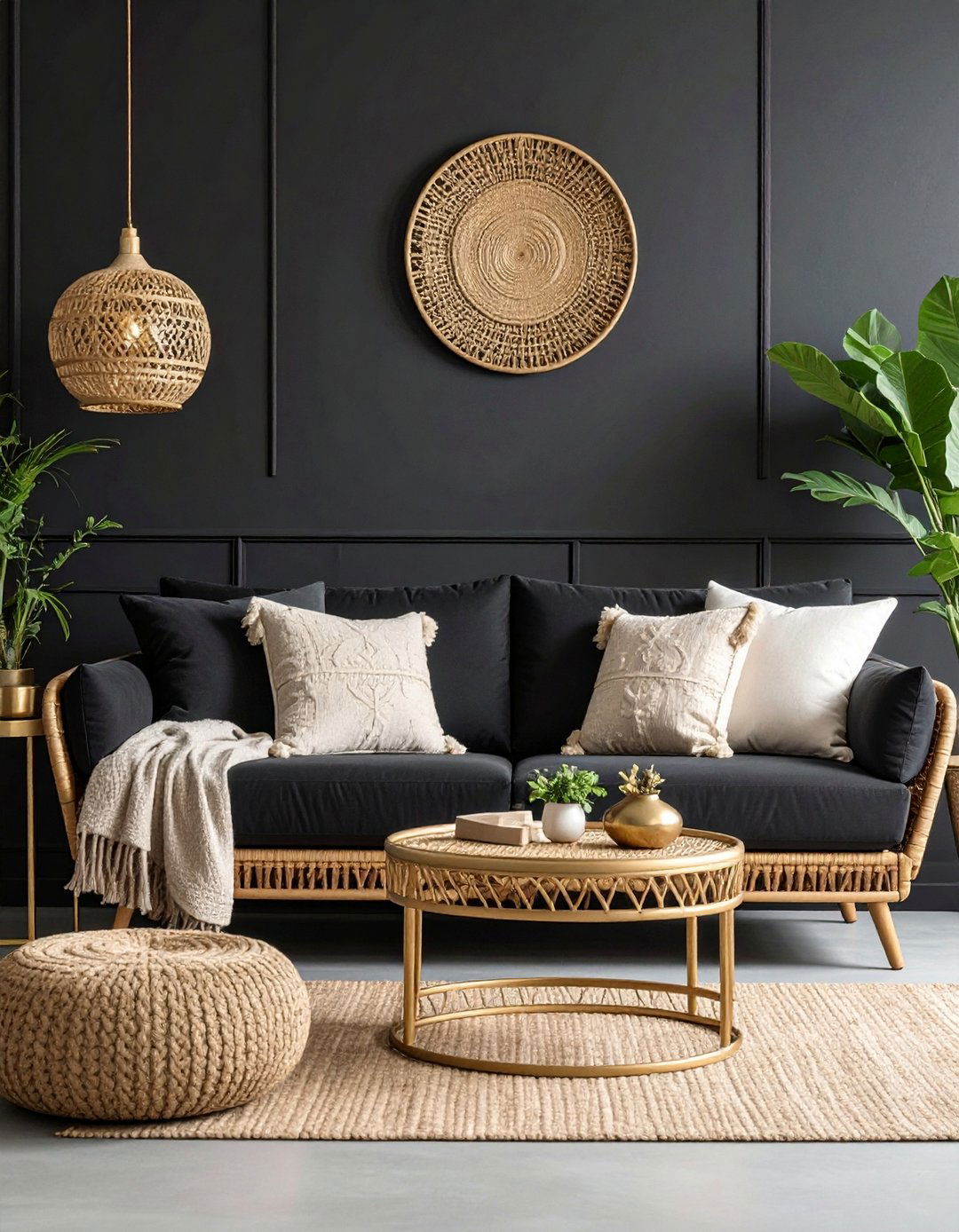
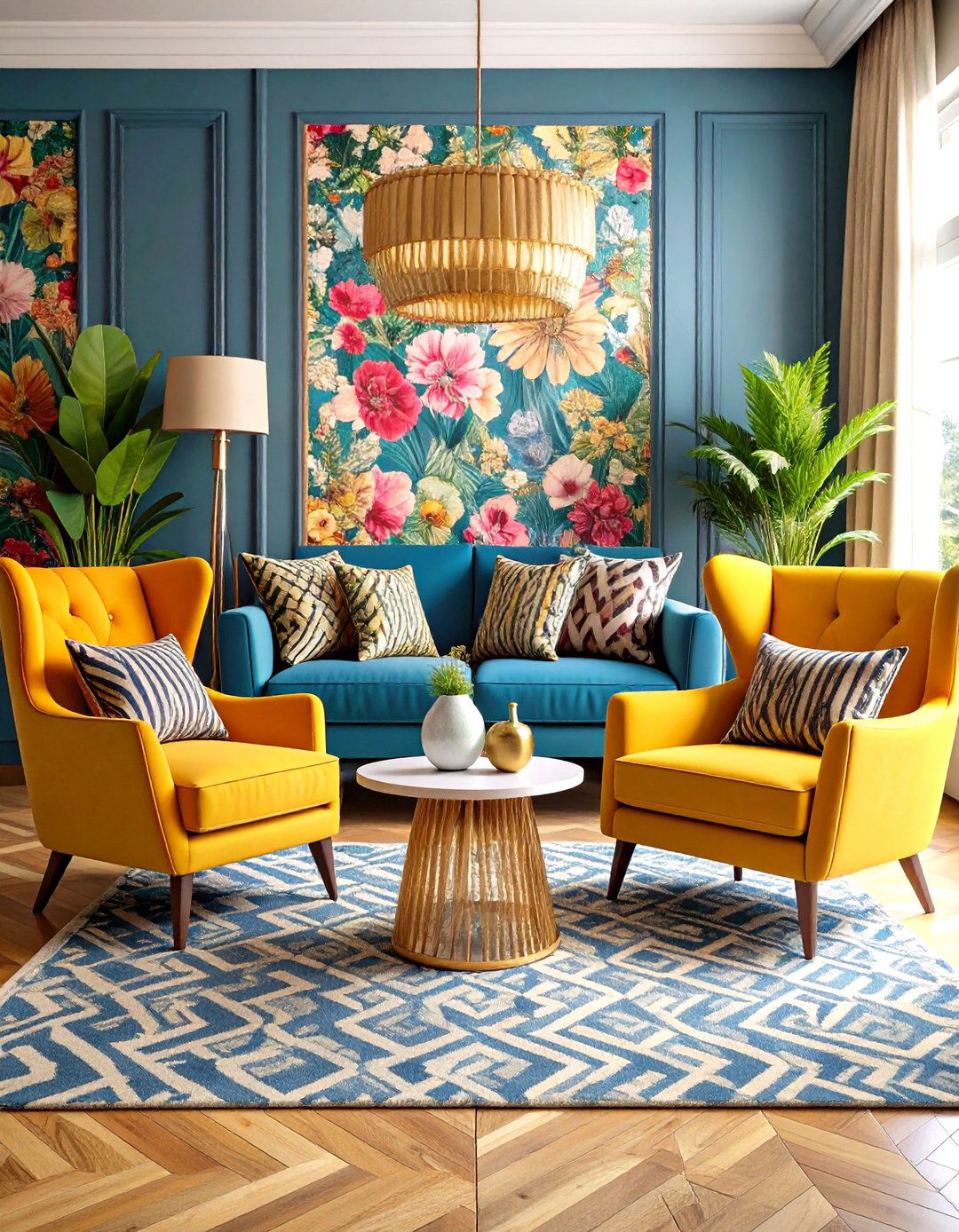
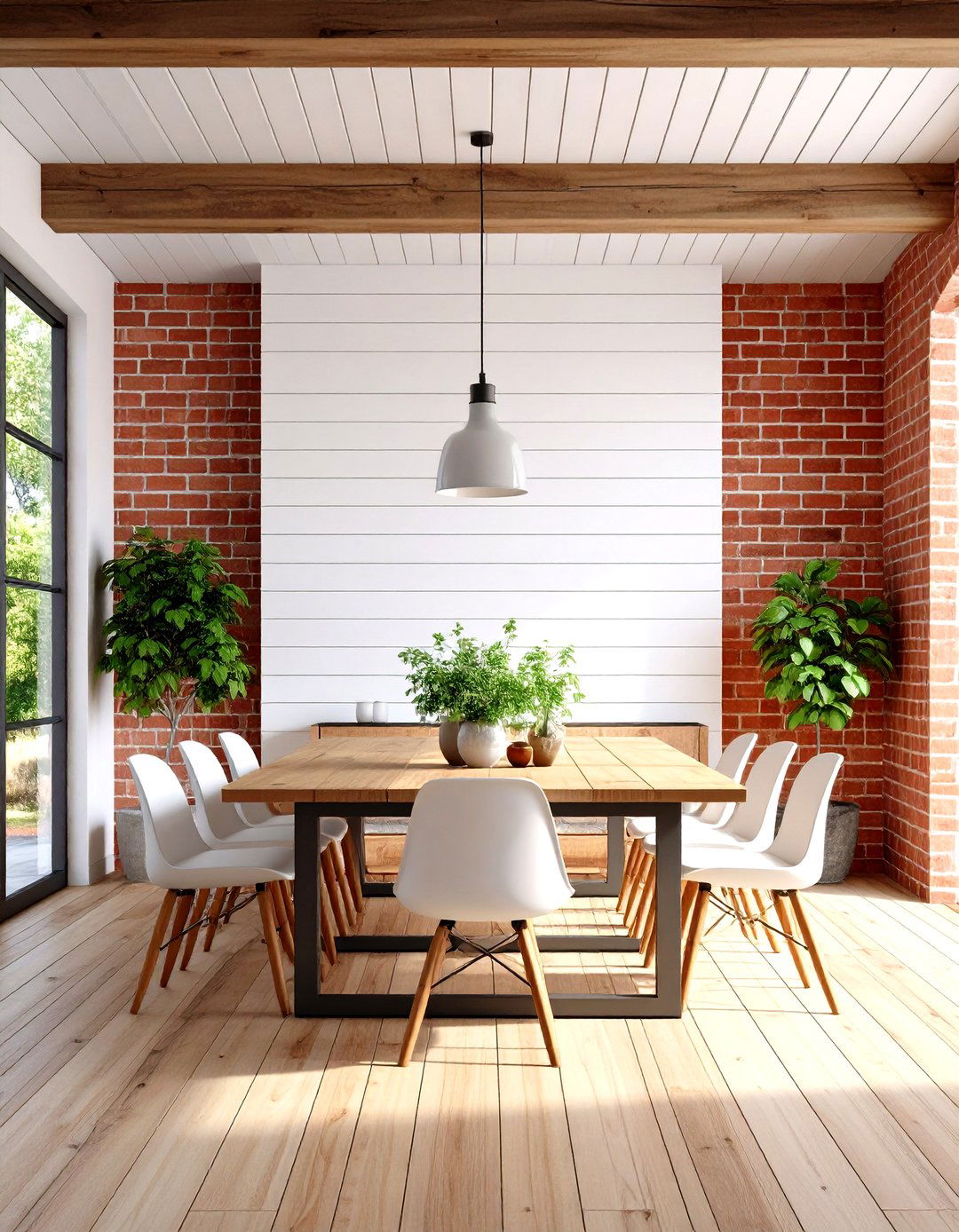
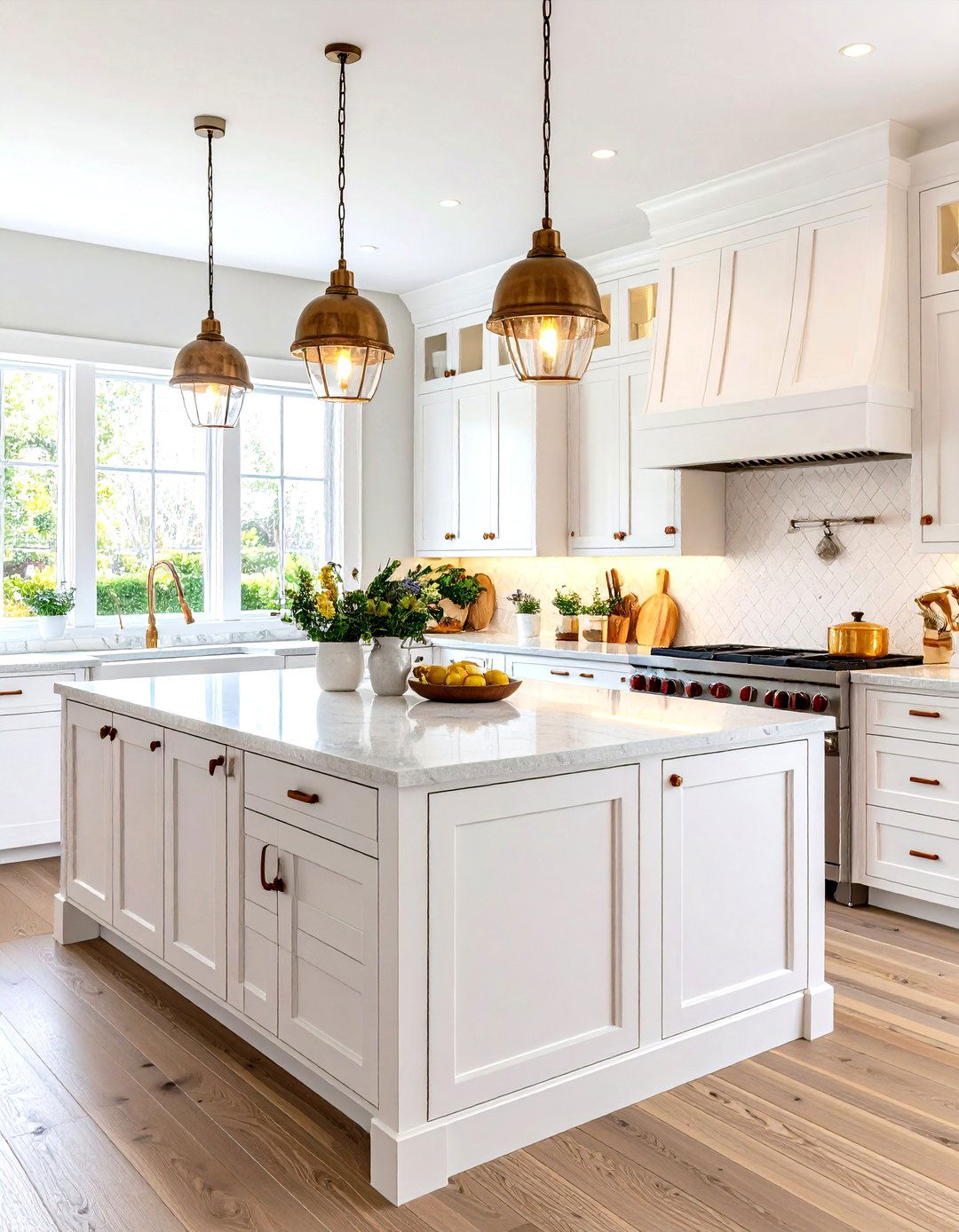
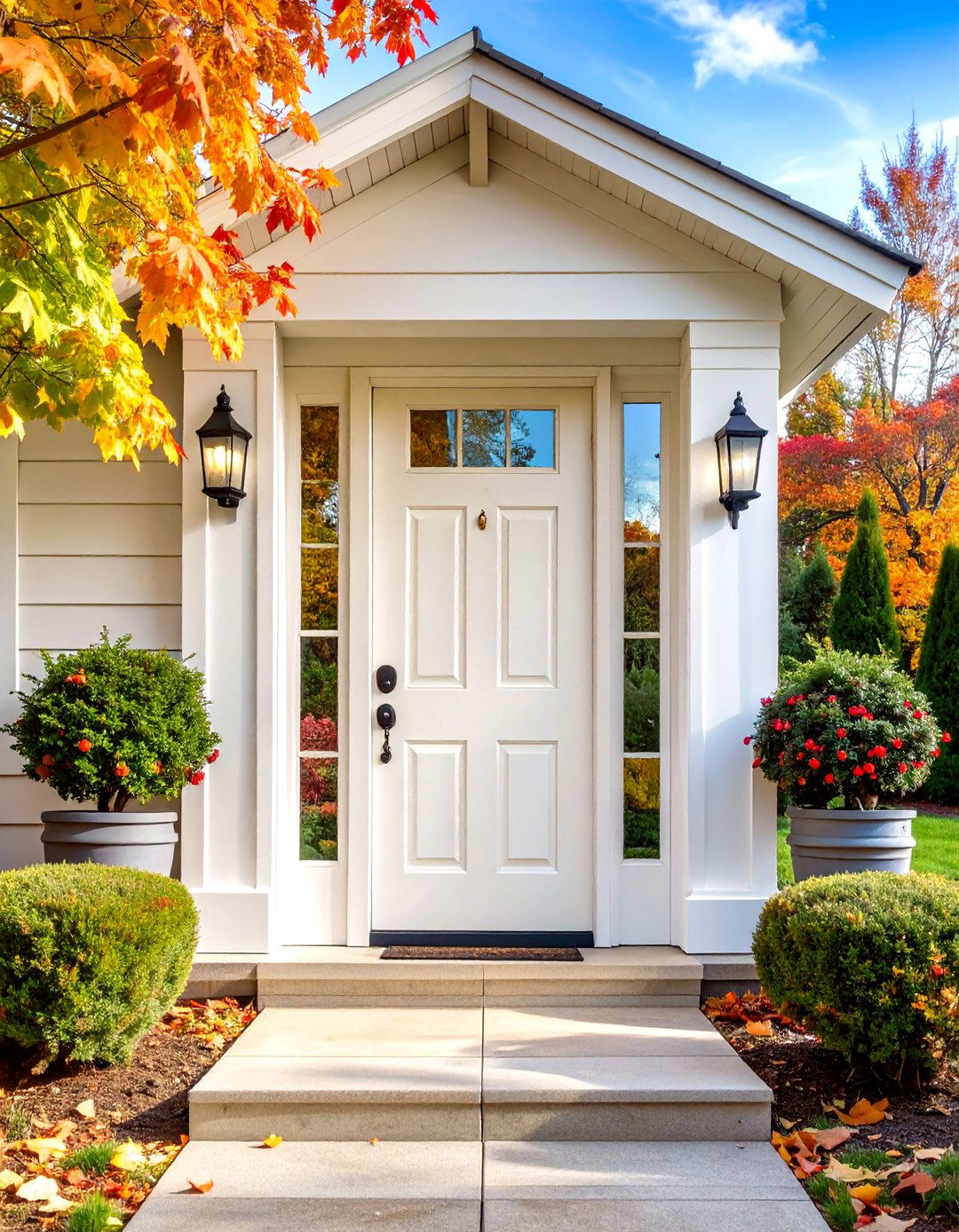
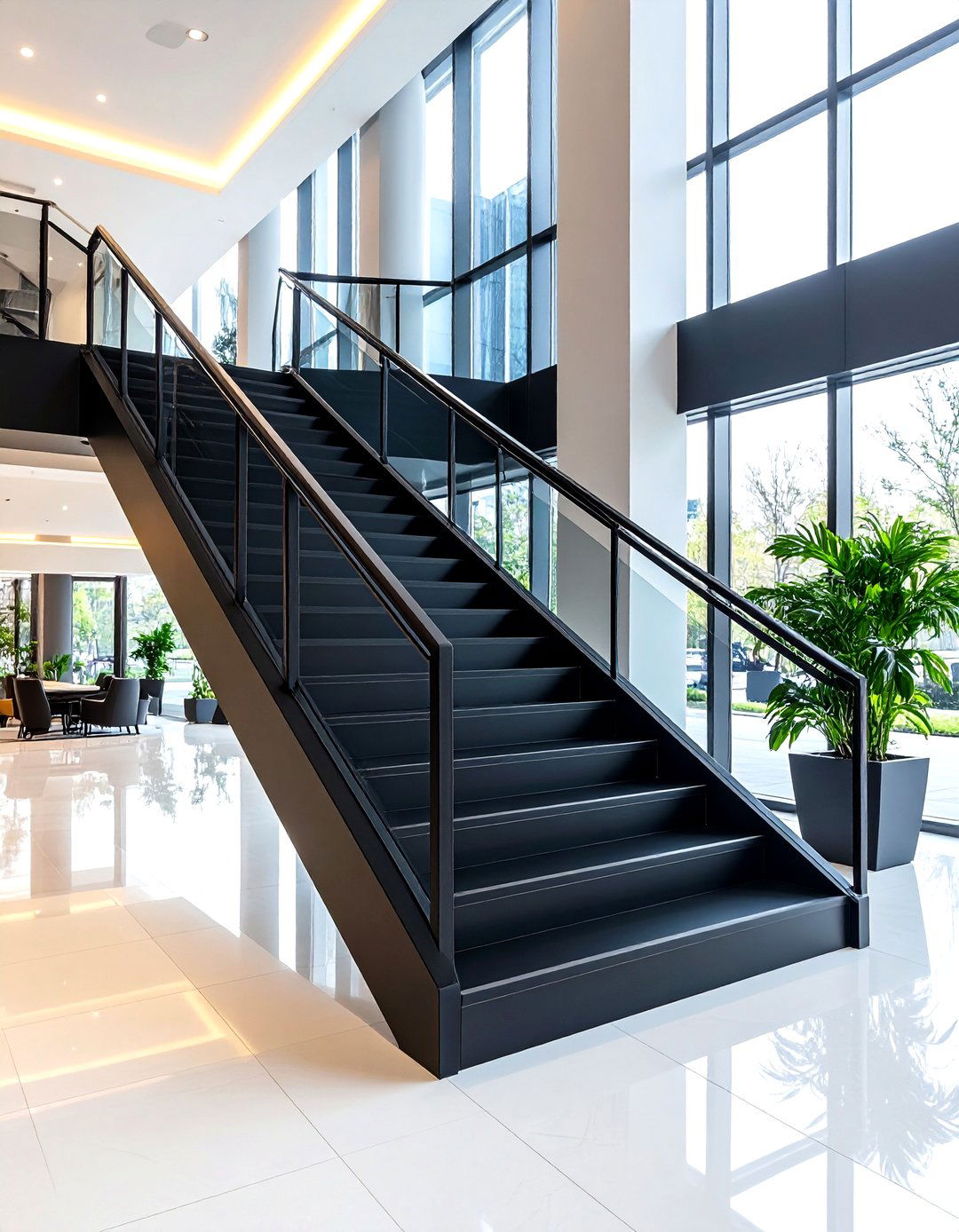
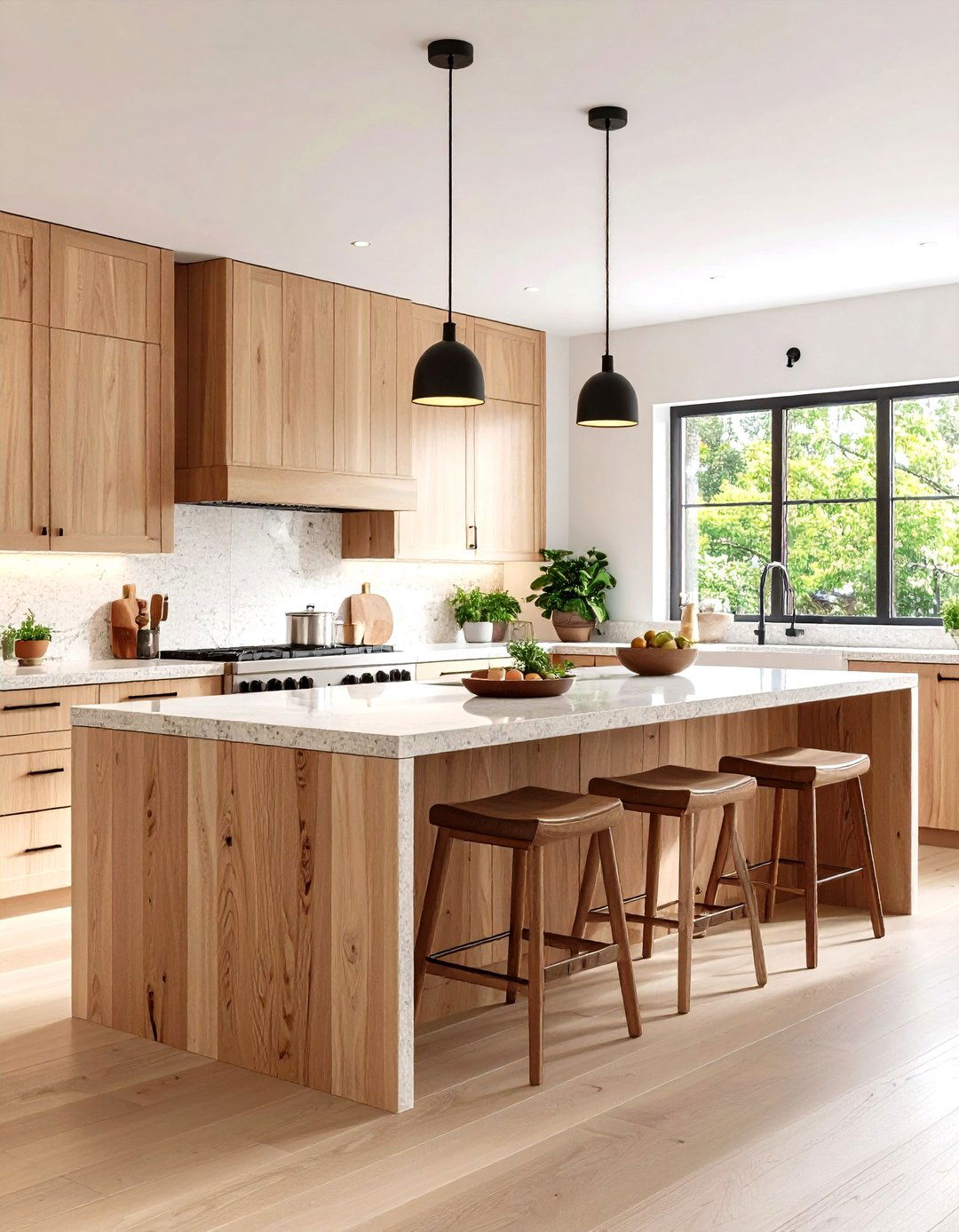
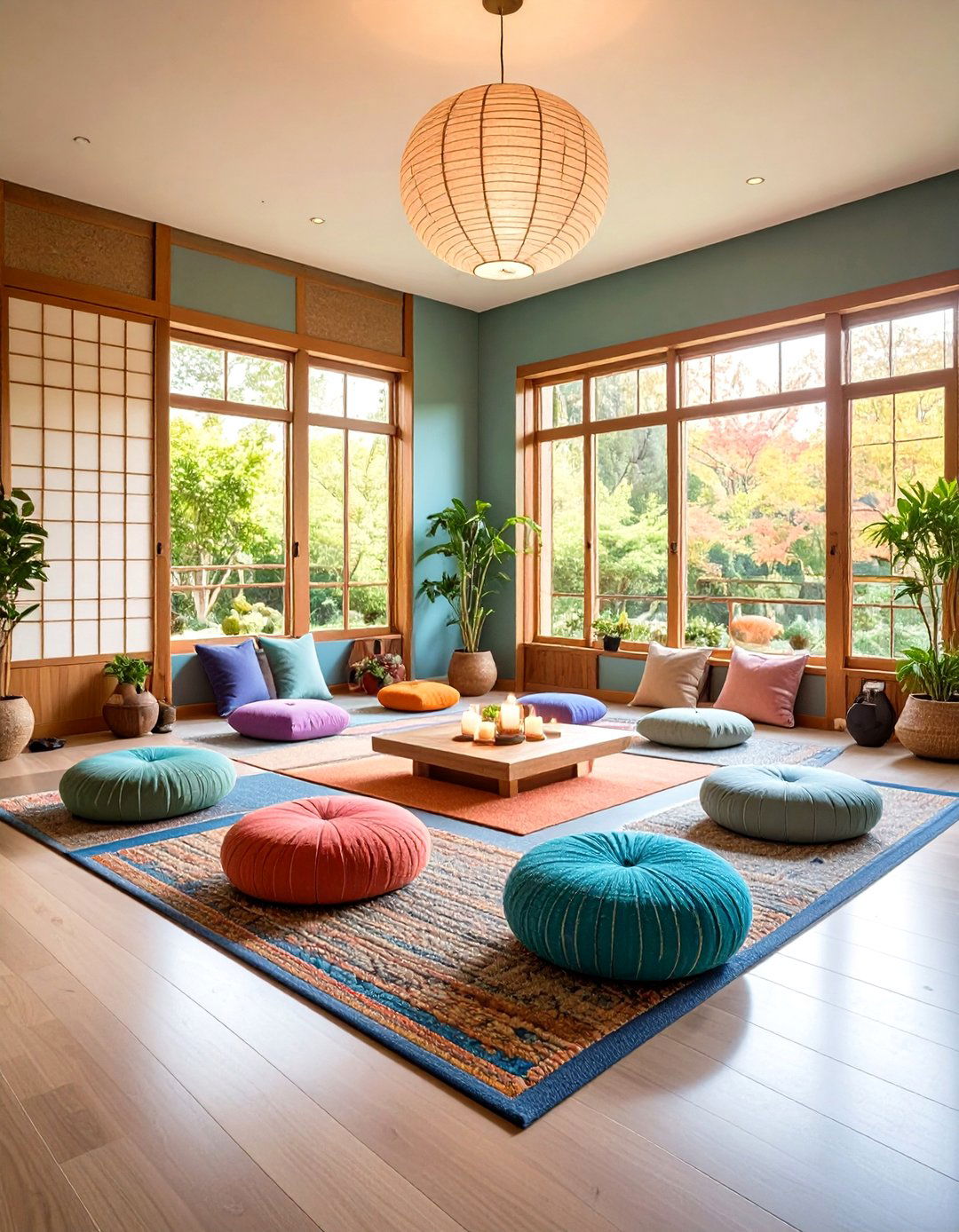

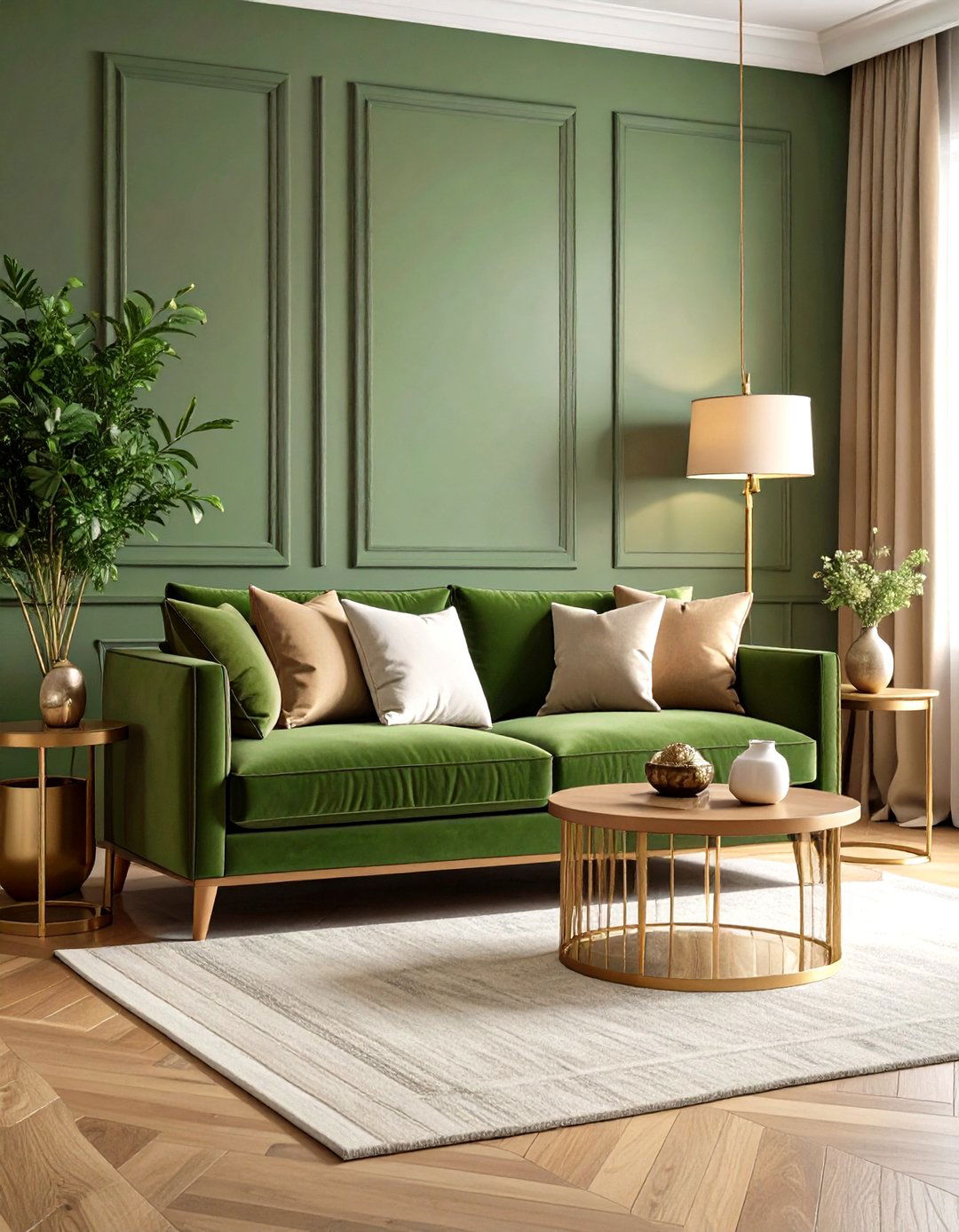
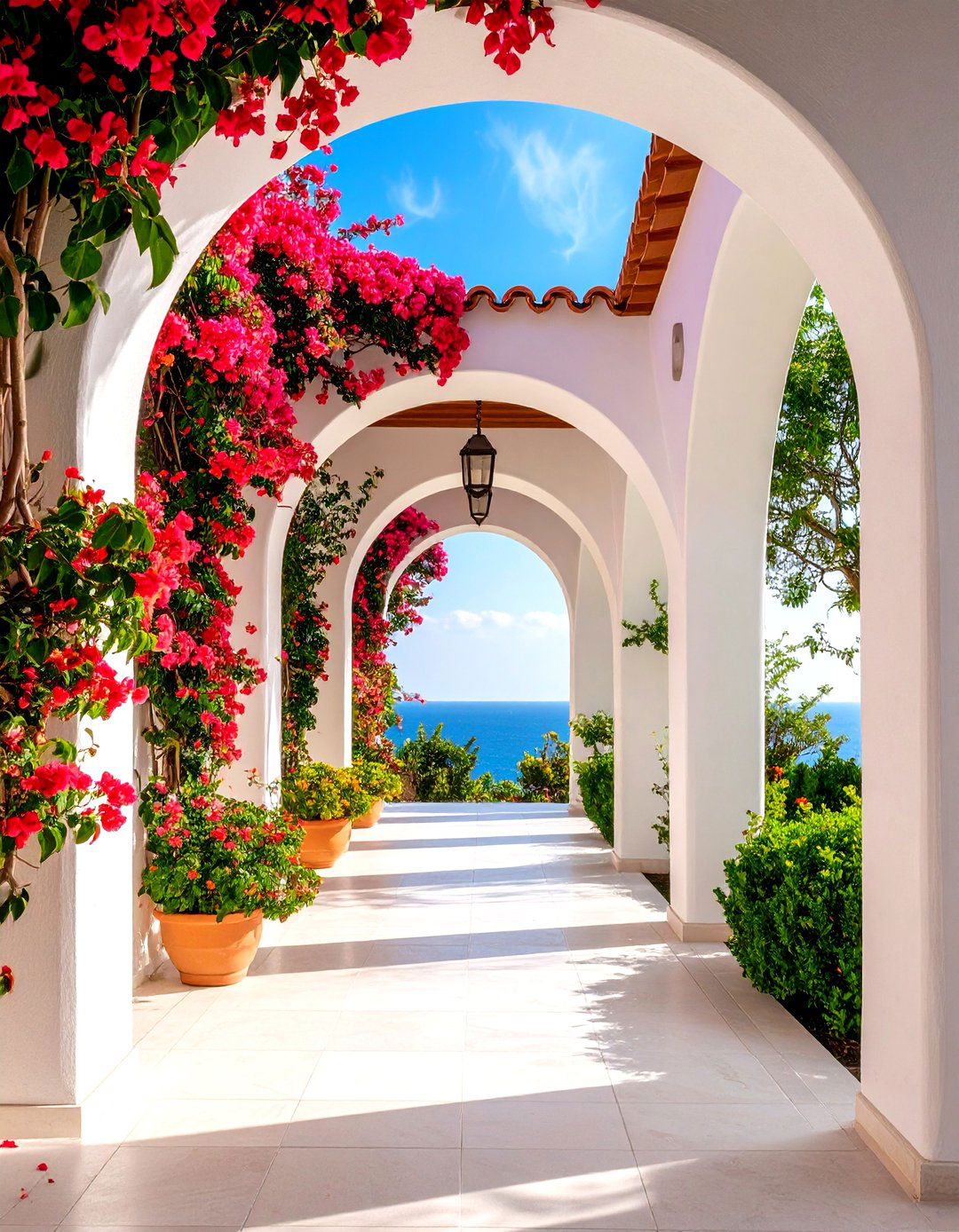
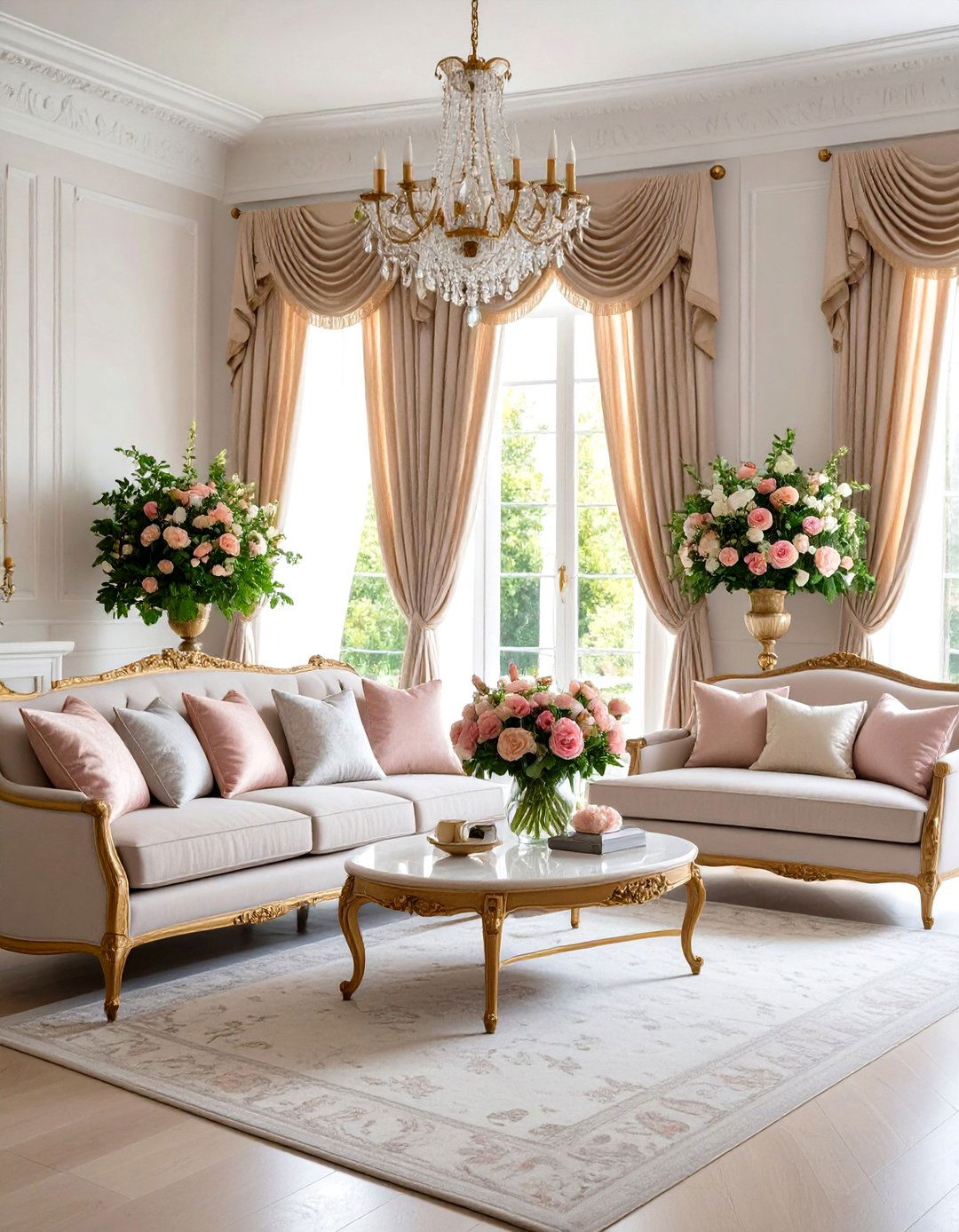

Leave a Reply